Try Emmaus Academy for free!
- The Deeper Meaning of the Presentation in the Temple

By Clement Harrold
For many Catholics, the fourth joyful mystery—the Presentation of Jesus in the Temple—can be a difficult scene to meditate on. What’s the episode about, anyway? And what might be its deeper meaning?
Beginning with the first question, it’s important to remember that the Presentation described in Luke 2:22-38 is not the circumcision of Jesus. That already took place eight days after His birth. Rather, the Presentation took place in order to fulfill two different dictates of the Mosaic Law.
The first of these, drawn from Leviticus 12, mandated that mothers needed to be purified forty days after giving birth to a male child. This is why the Presentation is celebrated in the Church’s calendar on February 2nd—also known as “Candlemas,” an allusion to Simeon’s words about the boy Jesus being “a light for revelation to the Gentiles” (Lk 2:32)—because the event takes place forty days after the nativity (counting December 25 as day one).
In order to make the purification, the mother in question was required to sacrifice a lamb as well as either a pigeon or a turtledove. The law made provision, however, for those families who were too poor to afford a lamb, in which case they could sacrifice two pigeons or two turtledoves instead. St. Luke goes out of his way to inform the reader that this is exactly what the Holy Family did, thereby reminding us of their material poverty (see Lk 2:24).
The second precept of the Mosaic Law which Mary and Joseph were following is the requirement from Exodus 13:2 that all firstborns be consecrated to God in a special way. More specifically, this ritual rested on the understanding that the firstborn naturally belonged to God, and so the child’s human parents were expected to “redeem” (from the Latin redimō , meaning to “buy back”) their child by paying five shekels to the priest.
All of this helps us to see that the Presentation in the Temple was about two important things: (1) the purification of Mary and (2) the redemption of baby Jesus. So far so good. But there are two other elements here which are worth paying attention to. For one thing, the Mosaic Law nowhere demanded that the purification or the redemption take place within the Temple. This means that the Holy Family was being extra devout by going to the Temple for this special day.
Additionally, there is one detail in the Presentation narrative which is startling for its absence. While St. Luke does mention that Mary and Joseph bought the two turtledoves, he never takes the time to mention the paying of the five shekels to redeem baby Jesus. In other words, he cites the redeeming-of-the-firstborns precept laid down in Exodus 13:2, but he leaves out a description of this redemption taking place. Why might that be?
For the late Pope Benedict XVI, in his Jesus of Nazareth: The Infancy Narratives , the answer was obvious. St. Luke leaves a literary silence in the passage in order to drive home the point that the infant Jesus belongs to His Heavenly Father:
Evidently Luke intends to say that instead of being “redeemed” and restored to his parents, this child was personally handed over to God in the Temple, given over completely to God. . . . Luke has nothing to say regarding the act of “redemption” prescribed by the law. In its place we find the exact opposite: the child is handed over to God, and from now on belongs to him completely. (p. 3)
Understanding this detail can help us bring the fourth joyful mystery to life in a new way. The Presentation isn’t just another boring religious ritual. On the contrary, it is a deeply symbolic moment pointing to Jesus’s divine identity, and to Mary and Joseph’s perfect cooperation with His divine mission.
Further Reading:
http://jimmyakin.com/how-the-accounts-of-jesus-childhood-fit-together
https://www.ncregister.com/blog/whats-happening-at-the-presentation-of-the-lord
Benedict XVI, Jesus of Nazareth: The Infancy Narratives (Image, 2012)
Clement Harrold is a graduate student in theology at the University of Notre Dame. His writings have appeared in First Things , Church Life Journal , Crisis Magazine , and the Washington Examiner . He earned his bachelor's degree from Franciscan University of Steubenville in 2021.
Reflections for the Feast of the Presentation of the Lord
Introduction: This feast commemorates how Jesus, as a baby, was presented to God in the Temple in Jerusalem. This presentation finds its complete and perfect fulfillment in the mystery of the passion, death and Resurrection of the Lord. The Feast of the Presentation of the Lord is a combined feast , commemorating the Jewish practice of the purification of the mother after childbirth and the presentation of the child to God in the Temple and his buying back ( redemption ) from God. It is also known as the Feast of the Purification of Mary , and the Feast of Candlemas. It is also called the Feast of Encounter ( Hypapánte in Greek) because the New Testament, represented by the baby Jesus, encountered the Old Testament, represented by Simeon and Anna. Joseph offered two pigeons in the Temple as sacrifice for the purification of Mary after her childbirth and for the presentation and redemption ceremonies performed for baby Jesus.
Homily starter anecdote: “Four chaplains Sunday: Julia Duin in the Washington Times Sunday, February 1, 2009 told this story. Just after midnight on Feb. 3, 1943, an act of extraordinary unselfishness by a group of men became a legend of martyrdom and sacrifice. When the Army ship Dorchester was torpedoed by the Germans just south of Greenland that night, its passengers and crew had 25 minutes to get off the boat. As 902 people went for the life jackets, it quickly was discovered there weren’t near enough. Of the 13 lifeboats, only two functioned. In the ship’s final minutes, Methodist senior chaplain George Lansing Fox, Rabbi Alexander Goode, Dutch Reformed minister Clark V. Poling and John P. Washington, a Roman Catholic priest, were helping passengers leave the vessel. Then four men appeared all of them without life jackets. The chaplains quickly gave up their own vests and went down with the ship, perishing in the freezing water. Survivors saw them, locked arm in arm, praying and singing the Navy hymn, “Eternal Father, Strong to Save” just before the ship dove beneath the waves. It was a night as dramatic as the sinking of the Titanic but without a blockbuster movie to record the drama. “The Four Immortal Chaplains,” as they are now known, have been honored many times, including on a stamp issued in their honor by the U.S. Postal Service. Hence the first Sunday in February is known as “Four Chaplains Sunday” in some Christian denominations. They presented and offered themselves completely for the wellbeing of others as Jesus was presented to God his Heavenly Father in the Temple of Jerusalem for the salvation of the world. ( http://frtonyshomilies.com/).
Scripture lessons summarized: In the first reading, taken from Malachi, the prophet speaks of the Lord suddenly coming to Jerusalem to purify the lax, lazy and indifferent priests of His Temple as silver is purified by fire. Simeon saw the Infant Jesus as the fulfillment of this passage. He saw Jesus as the Lord Who has come to the Temple, "destined to be the downfall and rise of many in Israel." In the second reading, St. Paul proclaims Jesus as our Eternal High Priest of the New Covenant (Heb 2:17), Who offered himself on the altar of Calvary, the only pure priestly sacrifice that could please God. He replaces the former priesthood. The Gospel describes how Joseph, as the head of the Holy Family of Nazareth, presented Mary and the baby Jesus in the Temple of God for the mother’s purification and the Child’s “redemption.” It also describes the Holy Family’s encounter with the old prophet Simeon and the holy old widow Anna. In his prophecy, Simeon extols the divine blessings which the Messiah is bringing to Israel and to all men and predicts that Mary will play a crucial and sacrificial role in her Son's redemptive work by sharing in her Son's sufferings.
The first reading explained : Malachi prophesies in the first reading that the Lord is going to appear suddenly in the Temple of Jerusalem to purify its priests and the people . The prophecy warns that nobody can endure the day of the messenger's coming because he will be like a refining fire, purifying the sons of Levi. Led by the Spirit, Simeon saw the Infant Jesus as the fulfillment of this passage . Simeon, even if unknown to himself, foresaw Christ and His priests of the New Covenant who were ordained during the Last Supper. He saw Jesus as the Lord Who would come to the Temple, "destined to be the downfall and rise of many in Israel." In today's reading, Malachi prophesies that God will purify the lax, lazy and indifferent priests of His Temple as silver is purified by fire. At the time of Malachi (around 460-450 BC), the priests were offering blemished (blind, lame) sacrifices and giving bad example (1:6-2:4). The people were negligent in their support of the Temple (3:6-12). Israelite wives were being rejected by husbands who wished to marry foreign women (2:14-16). Social injustice was rampant (3:5), and the people doubted God’s love (1:2-5). Hence, Malachi reminds them that the Day of the Lord, a Day of Judgment, reward and retribution is coming. He describes the Divine intervention as a two-stage process. First God’s messenger will appear to prepare the way by purifying the clergy and refining the cult (v. 3). This purification will take place until they present offerings to the Lord in a spirit of justice and righteousness. Then, the Lord of Hosts will suddenly appear in the Temple (v. 1), to bring judgment and justice against unfaithful sinners (v. 5). The Psalm announces to Jerusalem that Jerusalem is about to receive a great visitor. The Psalmist identifies him as “The LORD of hosts … the king of glory.”
The second reading explained: The second reading proclaims Jesus as our Eternal High Priest of the New Covenant (Heb 2:17), Who offered Himself on the altar of Calvary, the only pure priestly sacrifice that could please God. The Didache or the first catechism of the early Church (14:1-3), saw Malachi’s prophecy of a pure sacrifice and offering made from east to west as a prophecy of the sacrifice of the Eucharist. Hence Malachi prophesies that the Lord will enter His Temple, there will be a renewed priesthood, and there will be a pure sacrifice offered worldwide and pleasing to God -- the Eucharist. Jesus became like us in all things except sin in order that He might offer to the Father perfect praise and glory. Besides, since Jesus fully shared our experience, He is now a merciful and faithful High Priest on our behalf, "able to help those who are being tested." Jesus replaces the former priesthood. In keeping with the theme of today’s feast, namely, the presentation of the first fruits, this excerpt from Hebrews emphasizes Jesus’ dual role, as first-fruits , par excellence , and as the faithful High priest Who presents the perfect gift of Himself to God for the expiation of human sin. By virtue of His Incarnation, Jesus became human in every way (vv. 17-18) except as regards sin. As representative of His brothers and sisters before God and as their Mediator, Christ perfected His service as both sacrifice and priest. By so doing, Christ was able to “rob the devil” of power (v. 14). As the first-fruits from the dead, as the conqueror of sin and death, Christ, in His person and through His mission, has set the course and cleared the way we are to follow; the decision to do so must be a daily and deliberate one. It takes faith to see God's power at work in the death of Jesus. Simeon hinted at this when he told Mary that she herself would be pierced with a sword. Even knowing that her Son was the Savior of the world, it would be difficult for Mary to see him accomplish that salvation by being crucified.
Exegesis of today’s Gospel: The birth of Christ was revealed by three kinds of witnesses in three different ways -- first, by the shepherds, after the angel's announcement; second, by the Magi, who were guided by a star; third, by Simeon and Anna, who were inspired by the Holy Spirit. Today’s Gospel describes the Presentation of the Baby Jesus in the Temple. It was intended to ritually redeem Jesus who was the first born in the family and where Mary herself will have to be ritually purified. Mary and Joseph was a typical pious Jewish couple, who went to the Temple in obedience to do all that was required and expected of them by the Law.The Feast of the Presentation of Jesus is a combined feast , commemorating the Jewish practice of the purification of the mother after childbirth and the presentation of the child in the Temple. It is known as the Hypapánte feast or Feast of the Purification of Mary (by the offering two pigeons in the Temple), the Feast of the Presentation of the Lord (by prayers and a sacrifice offered in the Temple to redeem or buy the firstborn male child back from the Lord), the Feast of Candlemas (because of its ancient rite of blessing of the candles to be used in the church for the next year — a practice dating from the middle of the fifth century) and the Feast of Encounter (because the New Testament, represented by the Baby Jesus, encountered the Old Testament, represented by Simeon and Anna). Originally, there was no connection between today’s festival and the blessing of candles. In the ancient East, this celebration occurred on February 14, forty days after Epiphany. On February 15, pagans celebrated the festival of Lupercalia , a great “light” festival. Perhaps this is an instance of the Church's “baptizing” a pagan custom. At the principal Mass, the celebrant blesses candles, and people take part in a candlelight procession. This should remind us that Jesus is our High Priest and the Light of the World.
Purification and redemption ceremonies : The Gospel describes how Joseph, as the head of the Holy Family of Nazareth, presented Mary and the baby Jesus in the Temple of God for the mother’s purification and the child’s “redemption.” According to Leviticus 12:2-8, a woman who bore a child was unclean for forty days following the birth of a son or eighty days following the birth of a daughter. Although Mary, the most holy of women, ever-Virgin, was exempt from these precepts of the Law, because of her miraculous conception, she chose to submit herself to the Law just like any other Jewish mother. Joseph and Mary showed their total submission to Law and obey the norms prescribed by the Old Testament. The custom was practiced probably for the physical and emotional re-integration of the new mother into the community. There was a religious reason as well. Exodus 13:2, 12-13 prescribes that every first-born male belongs to God and must be set apart for the Lord, that is, dedicated to the service of God. However, once divine worship was reserved to the tribe of Levi, first-born who did not belong to that tribe were not dedicated to God's service, and to show that they continued to be God's special property, a rite of redemption was performed. The Law also commanded that the Israelites should offer in sacrifice some lesser victim -- for example, a lamb or, if they were poor, a pair of doves or two pigeons. The Book of Numbers 18: 15 taught that since every Jewish firstborn male child belonged to Yahweh, the parents had to “buy back” (redeem), the child by offering a lamb or turtledoves as a sacrifice in the Temple. The price of redemption for a human baby is five shekels of silver (Num 18:15-16). Jesus never needed to be "bought back," as he belonged wholly to the Lord, but Joseph kept these laws as an act of obedience to God.
The encounter with Simeon and Anna : By the inspiration of the Holy Spirit, the old, pious and Spirit-filled Simeon and Anna had been waiting in the Temple for the revelation of God’s salvation. The Greek Church celebrates the Hypapánte or Feast of the Encounter commemorating the encounter of the New Testament represented by Jesus with the Old Testament represented by Simeon and Anna. Simeon, who is described as a righteous and devout man, obedient to God's will, addresses himself to our Lord as a vassal or loyal servant who, having kept watch all his life in expectation of the coming of his Lord, sees that this moment has "now" come, the moment that explains his whole life. When he takes the Child in his arms, he learns, not through any reasoning process but through a special grace from God, that this Child is the promised Messiah, the Consolation of Israel, the Light of the nations. Simeon recognizes Jesus as the Lord’s anointed one, and in his prayer of blessing he prophesies that Jesus is meant to be the glory of Israel and the light of revelation to the Gentiles. Pope Francis: “Simeon took him in his arms and thanked God that he had finally “seen” salvation. Anna, despite her advanced age, found new vigor and began to speak to everyone about the Baby. It is a beautiful image: two young parents and two elderly people, brought together by Jesus. He is the one who brings together and unites generations! He is the inexhaustible font of that love which overcomes every occasion of self-absorption, solitude, and sadness. In your journey as a family, you share so many beautiful moments: meals, rest, housework, leisure, prayer, trips and pilgrimages, and times of mutual support… Nevertheless, if there is no love then there is no joy, and authentic love comes to us from Jesus. He offers us his word, which illuminates our path; he gives us the Bread of life which sustains us on our journey.”
Simeon’s prophecy: Simeon's canticle (verses 29-32) is also a prophecy. It consists of two stanzas: the first (verses 29-30) is his act of thanksgiving to God, filled with profound joy for having seen the Messiah. The second (verses 31-32) is more obviously prophetic and extols the divine blessings which the Messiah is bringing to Israel and to all men. The canticle highlights the fact that Christ brings redemption to all men without exception -- something foretold in many Old Testament prophecies (cf. Genesis 22:18; Isaiah 2:6; 42:6; 60:3; Psalm 28:2). While Simeon blessed Mary, he warned her that her child would be “ a sign of contradiction, ” and that she would be “ pierced with a sword.” Simeon was prophesying both the universal salvation that would be proclaimed by Jesus and the necessity of suffering in the mission of the Messiah. Jesus came to bring salvation to all men, yet He would be a sign of contradiction because some people would obstinately reject Him -- and for this reason He would be their ruin. But for those who would accept Him with faith, Jesus would be their salvation, freeing them from sin in this life and raising them up to eternal life. The Blessed Virgin and St. Joseph marveled, but not because they did not know who Christ was. They were in awe at the way God was revealing Him.
The paradox of blessedness: Mary was given the blessedness of being the mother of the Son of God. That blessedness also would become a sword which would pierce her heart as her Son died upon the cross. The words Simeon addressed to Mary announced that she would be intimately linked with her Son's redemptive work. The sword indicated that Mary would have a share in her Son's sufferings. Her suffering would be an unspeakable pain which would pierce her soul. Our Lord suffered on the cross for our sins, and it is those sins which forged the sword of Mary's pain. Mary received both a crown of joy and a cross of sorrow. But her joy was not diminished by her sorrow because it was fueled by her faith, hope, and trust in God and his promises. Jesus promised his disciples, "no one will take your joy from you" (John 16:22). The Lord gives us a supernatural joy which enables us to bear any sorrow or pain and which neither life nor death can take way. Do you know the joy of a life fully surrendered to God with faith and trust? According to Dr. Scot Hann, the feast we celebrate shows a curious turn of events. The Redeemer is redeemed. She who is all-pure presents herself to be purified. Such is the humility of our God. Such is the humility of the Blessed Virgin. They submit to the law even though they are not bound by it.
Anna’s encounter with the Lord and her testifying to the Messiah: Anna was an eighty-four-year-old widow who spent her days in the Temple in fasting and prayer, waiting for the promised Messiah. She was rewarded with the joy of seeing her Redeemer as a Baby. In her excitement, she praised God and introduced the Infant to others around her as the expected Messiah. Supernatural hope grows with prayer and age! Anna was pre-eminently a woman of great hope and expectation that God would fulfill all his promises. She is a model of godliness for all believers as we advance in age. Advancing age and the disappointments of life can easily make us cynical and hopeless if we do not have our hope placed rightly. Anna's hope in God and His promises grew with age. She never ceased to worship God in faith and to pray with hope. Her hope and faith in God's promises fueled her indomitable zeal and fervor in prayer and the service of God's people. We grow in hope by placing our trust in the promises of Jesus Christ and relying not on our own strength, but on the grace and help of the Holy Spirit. After completing the presentation and redemption of baby Jesus and the ritual purification of Mary and the meeting with Simeon and Anna, Joseph and Mary understood more fully their responsibility before God to protect the child as they return to Nazareth
Life messages : 1) Every Holy Mass in which we participate is our presentation . Although we were officially presented to God on the day of our Baptism, we present ourselves and our dear ones on the altar before God our Father through our Savior Jesus Christ at every Holy Mass. Hence, we need to live our daily lives with the awareness both that we are dedicated people consecrated to God and that we are obliged to lead holy lives.
2) We need the assistance of the Holy Spirit to recognize the presence of Jesus in ourselves and in others: All those who, like Simeon and Anna, persevere in piety and in the service of God, no matter how insignificant their lives seem in men's eyes, become instruments the Holy Spirit uses to make Christ known to others. In His plan of redemption, God makes use of these simple souls to do much good for all mankind. In other words, The Holy Spirit employs ordinary men and women with simple faith as His instruments to bear witness to Christ, His ideals and teachings, just as He used Simeon and Anna. The Holy Spirit reveals the presence of the Lord to us when we are receptive and eager to receive Him. Let us be open to the promptings of the Holy Spirit within us to recognize the indwelling presence of the Lord with us and in others. (Fr. Antony Kadavil)
Thank you for reading our article. You can keep up-to-date by subscribing to our daily newsletter. Just click here

More upcoming events:

Listen to our podcasts

Subscribe to our newsletters
To get the latest news

Papal audiences

Daily readings

Saint of the day


- Catholicism
- Religious Catalogue
- Give Monthly
- 1-800-447-3986
- [email protected]
- See of Peter
- Daily Mass and Readings
- Seasons and Feast Days
- Traditional Latin Mass
- Prayer Requests
- EWTN News Nightly
- EWTN Pro-Life Weekly
- EWTN News In Depth
- The World Over
- National Catholic Register
- Catholic News Agency
- Weekly Schedule
- Channel Finder
- Listen Live
- Audio Archive
- Monthly Schedules
- Podcast Central
- Galaxy 33 Transmission Plan
- SW Frequency Guide
- SW Monitoring Form
- Frequently Asked Questions
- EWTN Religious Catalogue
- My Giving Account
- Ways to Give
- Mother Angelica
- Online Learning Series
- EWTN Everywhere
- Media Missionaries
- Privacy Policy
- International Satellite Feeds
Why do Catholics celebrate the feast of the Presentation?
This feast day celebrates both the Presentation of Jesus in the Temple, as well as the Purification of Mary, which was required by the Mosaic Law forty days after the birth of a child.
The Church celebrates the feast of the Presentation of the Lord on February 2, also called Candlemas for the custom of using lighted candles. In the early Church it was often celebrated on February 14th, 40 days after the Epiphany, in keeping with the practice of celebrating Christmas on that date in the East. Among the Orthodox it is known as the Hypapante (“Meeting” of the Lord with Simeon).
DEEPEN YOUR UNDERSTANDING OF SACRED SCRIPTURE
Through this free ebook, the scriptural rosary: joyful mysteries ..
The Holy Rosary is an amazing prayer, encouraged by popes, loved by saints, and prayed by the faithful. Many miracles have come from this beautiful devotion. At its heart, the Rosary is a meditation on Sacred Scripture, on the lives of Jesus and Mary.
Through this Scriptural Rosary, we hope that you will be able to better meditate on each Hail Mary and deepen your understanding of Sacred Scripture. Use the form below to get your free copy of, The Scriptural Rosary .
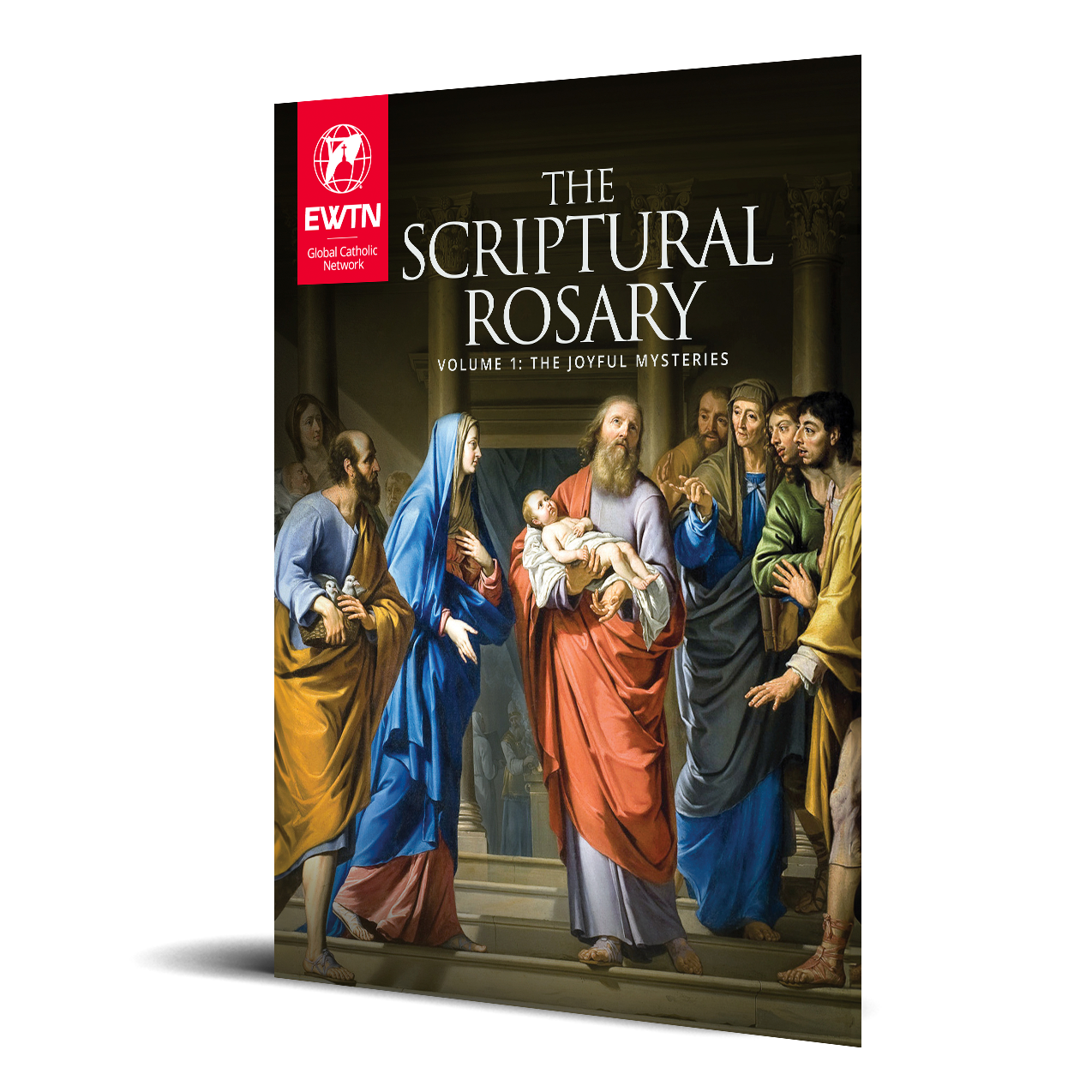
The Catechism of the Catholic Church (paragraph 529) teaches,
The presentation of Jesus in the temple shows him to be the firstborn Son who belongs to the Lord. With Simeon and Anna, all Israel awaits its encounter with the Savior-the name given to this event in the Byzantine tradition. Jesus is recognized as the long-expected Messiah, the “light to the nations” and the “glory of Israel,” but also “a sign that is spoken against.” The sword of sorrow predicted for Mary announces Christ's perfect and unique oblation on the cross that will impart the salvation God had “prepared in the presence of all peoples.”
It is also important to note that, as a poor family, the Holy Family gave an offering of a pair of turtledoves or two young pigeons. However, the Lamb whom they brought to the Temple was the Lamb of God.
He was presented when He was still a newborn, only 40 days old.
“In the mysterious encounter between Simeon and Mary, the Old and New Testaments are joined. Together the aging prophet and the young mother give thanks for this Light which has kept the darkness from prevailing. It is the Light which shines in the heart of human life: Christ, the Saviour and Redeemer of the world, ‘a light for revelation to the Gentiles and for the glory of his people Israel.’” – Pope St. John Paul II
The Gospel of Luke 2:22-40 states:
And when the time came for their purification according to the law of Moses, they brought him up to Jerusalem to present him to the Lord (as it is written in the law of the Lord, “Every male that opens the womb shall be called holy to the Lord”) and to offer a sacrifice according to what is said in the law of the Lord, “a pair of turtledoves, or two young pigeons.” Now there was a man in Jerusalem, whose name was Simeon, and this man was righteous and devout, looking for the consolation of Israel, and the Holy Spirit was upon him. And it had been revealed to him by the Holy Spirit that he should not see death before he had seen the Lord’s Christ. And inspired by the Spirit he came into the temple; and when the parents brought in the child Jesus, to do for him according to the custom of the law, he took him up in his arms and blessed God and said, “Lord, now lettest thou thy servant depart in peace, according to thy word; for mine eyes have seen thy salvation which thou hast prepared in the presence of all peoples, a light for revelation to the Gentiles, and for glory to thy people Israel.” And his father and his mother marveled at what was said about him; and Simeon blessed them and said to Mary his mother, “Behold, this child is set for the fall and rising of many in Israel, and for a sign that is spoken against (and a sword will pierce through your own soul also), that thoughts out of many hearts may be revealed.” And there was a prophetess, Anna, the daughter of Phanuel, of the tribe of Asher; she was of a great age, having lived with her husband seven years from her virginity, and as a widow till she was eighty-four. She did not depart from the temple, worshiping with fasting and prayer night and day. And coming up at that very hour she gave thanks to God, and spoke of him to all who were looking for the redemption of Jerusalem. And when they had performed everything according to the law of the Lord, they returned into Galilee, to their own city, Nazareth. And the child grew and became strong, filled with wisdom; and the favor of God was upon him.
Regarding Simeon and Anna, Pope Benedict XVI said,
Even the priests proved incapable of recognizing the signs of the new and special presence of the Messiah and Saviour. Alone two elderly people, Simeon and Anna, discover this great newness. Led by the Holy Spirit, in this Child they find the fulfilment of their long waiting and watchfulness. They both contemplate the light of God that comes to illuminate the world and their prophetic gaze is opened to the future in the proclamation of the Messiah: “Lumen ad revelationem gentium!” (Lk 2:32). The prophetic attitude of the two elderly people contains the entire Old Covenant which expresses the joy of the encounter with the Redeemer. Upon seeing the Child, Simeon and Anna understood that he was the Awaited One.
“… while we are still at the dawn of Jesus’ life, we are already oriented to Calvary. It is on the Cross that Jesus will be definitively confirmed as a sign of contradiction, and it is there that his Mother’s heart will be pierced by the sword of sorrow. We are told it all from the beginning, on the 40th day after Jesus’ birth, on the feast of the Presentation of Jesus in the Temple, so important in the Church’s liturgy.” - Pope St. John Paul II
This is a Hebrew name that means “he has heard” or “God has heard.”
When is St. Simeon’s feast day?
The Church celebrates his feast day on the day after Candlemas, February 3.
In Hebrew navi, a prophet is one who tells, a spokesperson of God, speaking divine truth, or foretelling what will be the consequences for the future. On both counts, Simeon was a prophet, who revealed the truth about who Jesus was, as well as the implications for Israel, for Jesus Himself and for Mary.
Originally taken from the Hebrew name Hannah, it means “favor” or “grace.”
When is St. Anna’s feast day?
Anna the Prophetess shares a feast day with St. Simeon on February 3.
“In the encounter between the old man Simeon and Mary, a young mother, the Old and New Testaments come together in a wondrous way in giving thanks for the gift of the light that shone in the darkness and has prevented it from prevailing: Christ the Lord.” - Pope Benedict XVI
St. Simeon offered this prayer,
Lord, now lettest thou thy servant depart in peace, according to thy word; for mine eyes have seen thy salvation which thou hast prepared in the presence of all peoples, a light for revelation to the Gentiles, and for glory to thy people Israel. (Luke 2:29-32)
Called the Nunc Dimittis, for the first words in the Latin Vulgate, it is one of the three major Canticles used in the Church’s liturgy. It is said each evening at the end of Night Prayer, the last Divine Office of the Liturgy of the Hours, or Breviary. The other Canticles are that of Zechariah, used for Lauds or Morning Prayer, and of Mary (the Magnificat), used for Vespers or Evening Prayer.
After speaking of Jesus, St. Simeon then spoke to Mary of her role of accompanying her Son in His redemptive suffering. Simeon reveals, as well, Mary’s own mission of intercession and compassion for us, her spiritual children.
Behold, this child is set for the fall and rising of many in Israel, and for a sign that is spoken against (and a sword will pierce through your own soul also), that thoughts out of many hearts may be revealed. (Luke 2:34-35)
“This is the meeting point of the two Testaments, Old and New. Jesus enters the ancient temple; he who is the new Temple of God: he comes to visit his people, thus bringing to fulfilment obedience to the Law and ushering in the last times of salvation.” - Pope Benedict XVI
Anna is the prophetess who saw the Holy Family at the Presentation of Jesus at the temple. The Gospel of Luke 2:36-38 tells us about Anna:
And there was a prophetess, Anna, the daughter of Phanuel, of the tribe of Asher; she was of a great age, having lived with her husband seven years from her virginity, and as a widow till she was eighty-four. She did not depart from the temple, worshiping with fasting and prayer night and day. And coming up at that very hour she gave thanks to God, and spoke of him to all who were looking for the redemption of Jerusalem.
The purification was ritual, preparatory to worship, in this case after the momentous events of childbirth and the time of rest or “laying in” afterwards. Thus, the Jewish priest purified himself by bathing before entering the holy place, and, similarly, the priest at Mass washes his hands before beginning the Eucharistic Prayer and handing the Body and Blood of Christ.
Mary, although morally pure, fulfilled her religious obligations by being purified 40 days after Jesus’ birth. Throughout her life, the Blessed Mother was always obedient to God’s Will, in this case expressed through the laws given to Israel through Moses.
“Simeon’s words seem like a second Annunciation to Mary, for they tell her of the actual historical situation in which the Son is to accomplish his mission, namely, in misunderstanding and sorrow. While this announcement on the one hand confirms her faith in the accomplishment of the divine promises of salvation, on the other hand it also reveals to her that she will have to live her obedience of faith in suffering, at the side of the suffering Savior, and that her motherhood will be mysterious and sorrowful.” — Pope St. John Paul II
This is the day when candles are blessed in the Church and traditionally have been lit in celebration of the feast.
Pope St. John Paul II said, “Christian traditions of the East and West have been interwoven, enriching the liturgy of this feast with a special procession in which the light of candles both large and small is a symbol of Christ, the true Light who came to illumine his people and all peoples.”
Candlemas is celebrated 40 days after Christmas. According to Leviticus 12, women should be purified 40 days after a son’s birth (33 days after the boy’s circumcision) and 80 days after a daughter’s birth. The purification was ritual, and preparatory to worship, in this case after the momentous events of childbirth and the time of rest or “laying in” afterwards.
In the Ordinary Form of the Latin Rite, the liturgical forms and calendar as revised after the Second Vatican Council, the last day of the Christmas Season is the Baptism of Our Lord, when His hidden life ended and His public ministry began.
However, the Church maintains an Extraordinary Form of the Latin Rite which utilizes the forms and calendar in use prior to the Council. In this usage, the Christmas Season continues until the Feast of the Presentation. Many Catholics, therefore, maintain their Christmas decorations through Candlemas.
Videos About Presentation of the Lord
Pope St. John Paul II said,
The prophetic words spoken by the aged Simeon shed light on the mission of the Child brought to the temple by his parents: “Behold this child is set for the fall and rising of many in Israel, and for a sign that is spoken against ... that thoughts out of many hearts may be revealed” (Lk 2:34-35). To Mary Simeon said: “And a sword will pierce through your own soul also” (Lk 2:35). The hymns of Bethlehem have now faded and the cross of Golgotha can already be glimpsed; this happens in the temple, the place where sacrifices are offered. The event we are commemorating today is thus a bridge as it were, linking the two most important seasons of the Church's year.
Pancakes are the traditional choice on Candlemas. In Mexico, people eat tamales on this feast day, and in France, they eat crepes.
What are the Joyful Mysteries of the Rosary?
The Joyful Mysteries include:
- The Annunciation
- The Visitation
- The Nativity of Our Lord
- The Presentation in the Temple
- The Finding of Jesus in the Temple
The Presentation is celebrated in the Church as the World Day for Consecrated Life. Pope St. John Paul II instituted this annual celebration in 1997 as a day of prayer for religious men and women and other consecrated persons. This recalls the special offering which they have made to the Lord through their vows of poverty, chastity and obedience. In Rome, the Holy Father celebrates a special Mass for them at St. Peter’s, which the religious living in Rome attend.
Pope Benedict XVI said,
The Presentation of Jesus in the Temple is an eloquent image of the total gift of one’s life for all those, men and women, who are called to represent “the characteristic features of Jesus — the chaste, poor and obedient one” (Post-Synodal Apostolic Exhortation, Vita Consecrata, n. 1) in the Church and in the world, through the evangelical counsels. For this reason Venerable John Paul II chose today’s Feast to celebrate the Annual World Day of Consecrated Life.


- Jesus is presented in the Temple- Luke 2:22-38
Scripture Resources
- Catholic Teaching on Sacred Scripture
- Catholic Biblical Interpretation
- Geography of Israel
- The Passion Narratives
- What is a Parable?
- The Three Worlds of the Text
- Scripture in Religious Education
- The Gospel of Matthew
- The Gospel of Mark
- The Gospel of Luke
- The Visit of the Wise Men – Matthew 2:1-12
- The Baptism of Jesus – Matthew 3:13-17
- The Beatitudes – Matthew 5:1-11
- Concerning Retaliation – Matthew 5:38-42
- The Parable of the Sower – Matthew 13:1-9
- The Parable of the Mustard Seed – Matthew 13:31-32
- Feeding the 5000 – Matthew 14:13-21
- Forgiveness and the parable of the Unforgiving Servant – Matthew 18:21-35
- The Greatest Commandment – Matthew 22:34-40
- The Passover with the Disciples – Matthew 26:17-30
- The Commissioning of the Disciples – Matthew 28:16-20
- The Proclamation of John the Baptist Mark 1:1-8
- Jesus’ Baptism – Mark 1:9-11
- The Beginning of the Galilean Ministry – Mark 1:14-20
- Jesus heals many at Simon’s House – Mark 1:29-34
- Jesus cleanses a Leper – Mark 1:40-45
- The True Kindred of Jesus – Mark 3:31-35
- The Purpose of Parables – Mark 4:10-20
- The parable of the Growing Seed – Mark 4:26-29
- Jesus Stills a Storm – Mark 4:35-41
- Jesus Heals the Gerasene Demoniac – Mark 5:1-20
- A Girl Restored to Life & a Woman Healed – Mark 5:21-43
- The Rejection of Jesus at Nazareth – Mark 6:1-6
- The Mission of the Twelve – Mark 6:6b-13
- Jesus Walks on the Water – Mark 6:45-52
- Feeding Stories – Mark 6:30-44 & Mark 8:1-10
- Jesus Cures a Deaf Man – Mark 7:31-37
- The Syrophoenician Woman’s Faith – Mark 7:24-30
- Jesus’ Declaration about Peter – Mark 8:27-30
- The Transfiguration – Mark 9:2-13
- The Healing of a Boy with a spirit – Mark 9:14-29
- Who is the Greatest – Mark 9:33-37
- Jesus blesses the little Children – Mark 10:13-16
- The Rich Man – Mark 10:17-31
- The Request of James and John – Mark 10:35-45
- The First Commandment – Mark 12:28-24
- The Widow’s offering – Mark 12:41-44
- The Necessity for Watchfulness – Mark 13:32-37
- Jesus Prays in Gethsemene – Mark 14:32-42
- The Resurrection of Jesus – Mark 16:1-8
- The Birth of Jesus Foretold – Luke 1:26-38
- The Birth of Jesus – Luke 2:1-21
- The Boy Jesus in the Temple – Luke 2:41-52
- The Baptism of Jesus – Luke 3:21-22
- The Beginning of the Galilean Ministry & The Rejection of Jesus at Nazareth – Luke 4:14-30
- Jesus Preaches in the Synagogue- Luke 4:42-44
- Jesus Calls the First Disciples- Luke 5:1-11
- Jesus Teaches and Heals – Luke 6:17-26
- A Sinful Woman Forgiven – Luke 7:36-50
- Girl Restored to Life – Luke 8:40-56
- The Parable of the Good Samaritan – Luke 10:25-37
- The Lord’s Prayer – Luke 11:1-13
- The Parable of the Lost Sheep – Luke 15:1-7
- The Parable of the Lost Coin – Luke 15:8-10
- The Parable of the Prodigal and his Brother – Luke 15:11-32
- Jesus Cleanses Ten Lepers – Luke 17:11-19
- Jesus and Zacchaeus – Luke 19:1-10
- The Widow’s Gift – Luke 21:1-4
- The Resurrection of Jesus – Luke 24:1-12
- The Road to Emmaus – Luke 24:13-35
- Jesus appears to His Disciples – Luke 24:36-49
- The Coming of the Holy Spirit – Acts 2:1-12
22 When the time came for their purification according to the law of Moses, they brought him up to Jerusalem to present him to the Lord 23 (as it is written in the law of the Lord, “Every firstborn male shall be designated as holy to the Lord”), 24 and they offered a sacrifice according to what is stated in the law of the Lord, “a pair of turtledoves or two young pigeons.” 25 Now there was a man in Jerusalem whose name was Simeon; this man was righteous and devout, looking forward to the consolation of Israel, and the Holy Spirit rested on him. 26 It had been revealed to him by the Holy Spirit that he would not see death before he had seen the Lord’s Messiah. 27 Guided by the Spirit, Simeon came into the temple; and when the parents brought in the child Jesus, to do for him what was customary under the law, 28 Simeon took him in his arms and praised God, saying, 29 “Master, now you are dismissing your servant in peace, according to your word; 30 for my eyes have seen your salvation, 31 which you have prepared in the presence of all peoples, 32 a light for revelation to the Gentiles and for glory to your people Israel.” 33 And the child’s father and mother were amazed at what was being said about him. 34 Then Simeon blessed them and said to his mother Mary, “This child is destined for the falling and the rising of many in Israel, and to be a sign that will be opposed 35 so that the inner thoughts of many will be revealed—and a sword will pierce your own soul too.” 36 There was also a prophet, Anna the daughter of Phanuel, of the tribe of Asher. She was of a great age, having lived with her husband seven years after her marriage, 37 then as a widow to the age of eighty-four. She never left the temple but worshiped there with fasting and prayer night and day. 38 At that moment she came and began to praise God and to speak about the child to all who were looking for the redemption of Jerusalem. New Revised Standard Version Bible: Catholic Edition, copyright © 1989, 1993 the Division of Christian Education of the National Council of the Churches of Christ in the United States of America. Used by permission. All rights reserved.
What to do with this educator’s commentary
This commentary invites you as a teacher to engage with and interpret the passage. Allow the text to speak first. The commentary suggests that you ask yourself various questions that will aid your interpretation. They will help you answer for yourself the question in the last words of the text: ‘what does this mean?’
This educator’s commentary is not a ‘finished package’. It is for your engagement with the text. You then go on to plan how you enable your students to work with the text.
Both you and your students are the agents of interpretation. The ‘Worlds of the Text’ offer a structure, a conversation between the worlds of the author and the setting of the text; the world of the text; and the world of reader. In your personal reflection and in your teaching all three worlds should be integrated as they rely on each other.
In your teaching you are encouraged to ask your students to engage with the text in a dialogical way, to explore and interpret it, to share their own interpretation and to listen to that of others before they engage with the way the text might relate to a topic or unit of work being studied.
Structure of the commentary:
The world behind the text
The world of the author’s community
The world at the time of the text
Geography of the text
Questions for the teacher
The world of the text
Text & textual features.
Characters & setting
Ideas / phrases / concepts
The world in front of the text
Meaning for today / challenges
Church interpretations & usage
The World Behind the Text
See general introduction to Luke .
This text forms a part of Luke’s infancy narrative. The narrative has already announced the impending birth of John the Baptist and Jesus and their actual births. It will go on to record some of the early life of Jesus. Matthew and Luke’s Gospels include very different, almost irreconcilable, infancy narratives. This passage, which is Luke’s alone, contributes to establishing his view on the nature of Jesus, woven into passages about his birth and early life.
The infancy narratives must be read as passages which explore the theological understanding of ‘who is Jesus of Nazareth?’ This particular passage from Luke provides literal evidence to two answers to this question.
- Jesus is a Jew from a faithful family. Luke’s narration of the Presentation in the Temple (v 22 -23) explains the reason for the temple visit being to follow purification laws and redemption laws set out in the Books of the Old Testament.
- Jesus of Nazareth is not wealthy. This is shown in their offering of two turtle doves. In Leviticus 12: 1 – 8 it states the required sacrifice for the purification after birth is a sheep and a turtle dove. “If she cannot afford a sheep, she shall take two turtledoves or two pigeons”, (Lev 12: 8). Explaining parts of Jewish ritual within the text is important for Luke’s Gentile audience who may not be familiar with the Jewish tradition.
He also provides theological answers through the words of Simeon and Anna: Jesus is the promised Messiah for all people, the one who, in bringing salvation to the Gentiles is destined for the falling and the rising of many in Israel, and to be a sign that will be opposed so that the inner thoughts of many will be revealed – and a sword will pierce your own soul too” (see meaning for today).
Two features found throughout Luke’s writing are present in this Scripture.
- Luke’s writing often imitates Old Testament birth stories, including that of Samuel (an important figure in the Old Testament, who was the first prophet following Moses). Luke uses the verb ‘presented’ which is the same language used in the Old Testament during the dedication of Samuel to the Temple ( 1 Sam 1: 24 – 27 ).
- Luke also uses Male and Female pairings in his writings (see ideas/concepts/themes).
Characters & Settings
Setting:
The story is set in the Temple. The Temple functions as a key location throughout Luke’s Gospel. For more information about the Temple please click here. Within the Temple Mary and Anna would only be welcome as far as the Women’s court. The use of Temple further forges the similarities between Jesus and the Old Testament character, Samuel (Byrne, 2015).
Characters
Jesus:
In this early stage of his life, Jesus is silent in words, however his presence speaks to Simeon and Anna. Although Jesus himself is not required at the temple, this action fulfills the promise that the first born will be dedicated to God. “Consecrate to me all the firstborn; whatever is the first to open the womb among the Israelites, of human beings and animals, is mine” (Exodus 13:2).
Mary:

Following Jewish custom, Mary was required to enter the temple as stated in the purification laws 40 days later after the birth of a son or 80 after the birth of a daughter ( Leviticus 12: 1 – 8 ). Mary, like Jesus, is silent, despite the significance of the words spoken by Simeon.
Joseph:
The husband of Mary and earthly father of Jesus, Joseph (also silent) dutifully follows the custom.
Simeon:
A devout Jew, who was guided by the Spirit to the temple. As Simeon holds Jesus, he represents the Jews who welcomed Jesus as the promised one (Fallon, 2012).
Anna’s lineage (V.36) and devotion and patience is highlighted in the text to show her credibility in praising the child. When paired with Simeon they are law-abiding faithful Jews who hold the authority to declare a saviour.
Ideas/ phrases/ concepts
It is likely that the infancy narrative of a Gospel is written last, somewhat like a prologue. Knowing the ‘end of the story’ the author is able to weave their views, beliefs and thoughts into the earliest characters. This infancy narrative contains many of the themes that will become prominent in the rest of the gospel:
- Revealing the identity and mission of Jesus. Jesus is recognised by Simeon and Anna as the promised Messiah. Simeon expands on what this will mean for the life of Jesus, his mother and all disciples. Anna praises Jesus and addresses all who were in the Temple.
- The Universality of God’s Kingdom Simeon states he is the Messiah for all. Fallon (2012) explains that the words by Simeon prepare Luke’s readers to see Jesus as the salvation for “all people.” This concept continues throughout the Chapter of Luke and into the Book of Acts (Also attributed to Luke).
- The importance of women. Anna is a widow and a prophetess. She represents Luke’s inclusion of and attention to women in Jesus’ life and ministry. Anna has an immediate reaction of joy in seeing the child and in Luke’s writing he uses a Greek word suggesting recognition or intuition, seeing what others cannot to emphasise her importance. Luke uses the literary feature of a male and female pair to indicate the welcome of all people, male and female, into the kingdom of God.
Questions for the teacher:
Please reflect on these questions before reading this section and then use the material below to enrich your responsiveness to the text.
Meaning for today/challenges
Patience in a Fast-Changing World
Anna and Simeon wait patiently for the arrival of the Messiah. In our world people are quick to lose patience when they don’t receive information, goods, or services at lightning speed. Pope Francis in his General Audience on March 30 2022 stated:
“There are great lessons for the world today in the witness of Simeon and Anna, the Holy Father continued. Although they were advanced in years and likely didn’t have the sharpest sight and hearing, their spiritual senses were enlightened through waiting for Jesus.”
There are many people in our world, including the elderly, First Nations peoples and refugees who continue to wait patiently for change. Change in legislation, policies, and attitudes to allow for the inclusion of all people.
Suffering when we love
Simeon’s warning to Mary is one about love. When humans love fully as a parent or friend, it involves connecting to each other. Loving means hurting; when others hurt, laughing when others laugh and crying when others cry. As a human, Jesus, His family, and His friends were subject to these highs and lows of loving relationships.
Church interpretation & usage
When Pope Francis celebrated Christmas Mass “during the Night” in a near empty Saint Peter’s Basilica on Christmas Eve in 2020, he said that God came to us at Christmas as a weak and vulnerable child to teach us how to love. “God came among us in poverty and need, to tell us that in serving the poor, we will show our love for Him.”
The heart of Christmas is about love, God’s love. God loves us so much that God gave us the most precious gift imaginable, Jesus. This great and wonderful gift of love calls us to love one another.
“For those who celebrate the birth of Christ as the coming of the Saviour, and embrace the Gospel, this annual observance provides the opportunity to be grounded once again at the very core of our being, to understand that the purpose of all humanity is to live in the knowledge of the love of God and thus to live peaceably with all men and women.” (Very Rev Peter G Williams, Diocese of Parramatta)
Liturgical usage

The feast of the Presentation of the Lord is held each year on February 2, which is 40 days after Christmas. As it is a feast day, the vestments (outer garment worn by the clergy) on this day would usually be white.
The feast of Candlemas is another name for this feast day and is celebrated in many parts of the world with the blessings and parading of candles.
Subscribe to our mailing list
for the latest news, resources and events

- Saint of the Day
Presentation of the Lord
- Franciscan Media
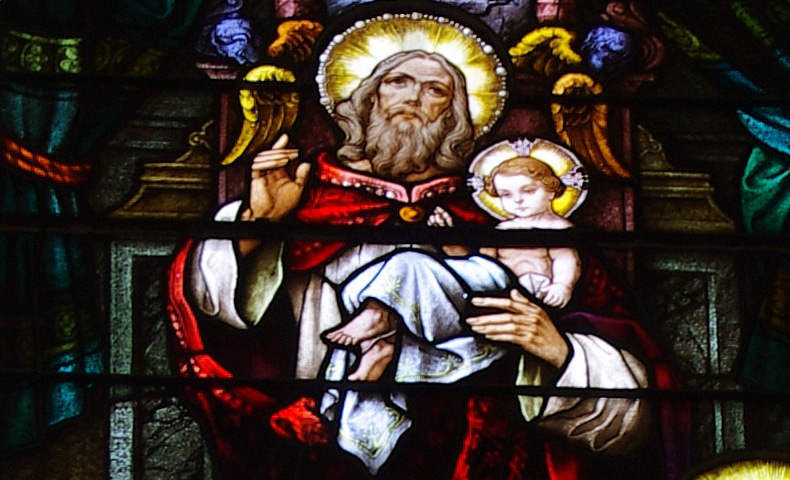
Image: Saint Bernard Church, Burkettsville, OH | v | photo by Nheyob
Saint of the day for february 2.
The Story of the Presentation of the Lord
At the end of the fourth century, a woman named Etheria made a pilgrimage to Jerusalem. Her journal, discovered in 1887, gives an unprecedented glimpse of liturgical life there. Among the celebrations she describes is the Epiphany, the observance of Christ’s birth, and the gala procession in honor of his Presentation in the Temple 40 days later. Under the Mosaic Law, a woman was ritually “unclean” for 40 days after childbirth, when she was to present herself to the priests and offer sacrifice—her “purification.” Contact with anyone who had brushed against mystery—birth or death—excluded a person from Jewish worship. This feast emphasizes Jesus’ first appearance in the Temple more than Mary’s purification.
The observance spread throughout the Western Church in the fifth and sixth centuries. Because the Church in the West celebrated Jesus’ birth on December 25, the Presentation was moved to February 2, 40 days after Christmas.
At the beginning of the eighth century, Pope Sergius inaugurated a candlelight procession; at the end of the same century the blessing and distribution of candles which continues to this day became part of the celebration, giving the feast its popular name: Candlemas.
In Luke’s account, Jesus was welcomed in the temple by two elderly people, Simeon and the widow Anna. They embody Israel in their patient expectation; they acknowledge the infant Jesus as the long-awaited Messiah. Early references to the Roman feast dub it the feast of Saint Simeon, the old man who burst into a song of joy which the Church still sings at day’s end.

Sign Up for Our Daily Newsletter
Includes Saint of the Day, Minute Meditations, and Pause + Pray.

Our Mission
We are Franciscan Media, a sponsored ministry of the Franciscan Friars of Our Lady of Guadalupe Province . We strive to inspire a loving world that embraces the Franciscan spirit of harmony, joy, and simplicity. May our resources renew your spirit as we share God’s love in the spirit of St. Francis and St. Clare.
- Phone: (513) 241-5615
- Address: 28 W. Liberty St. Cincinnati, OH 45202
Writer’s Guidelines Privacy Policy Post a Prayer Request Donor Portal Our Mission
Recent Articles
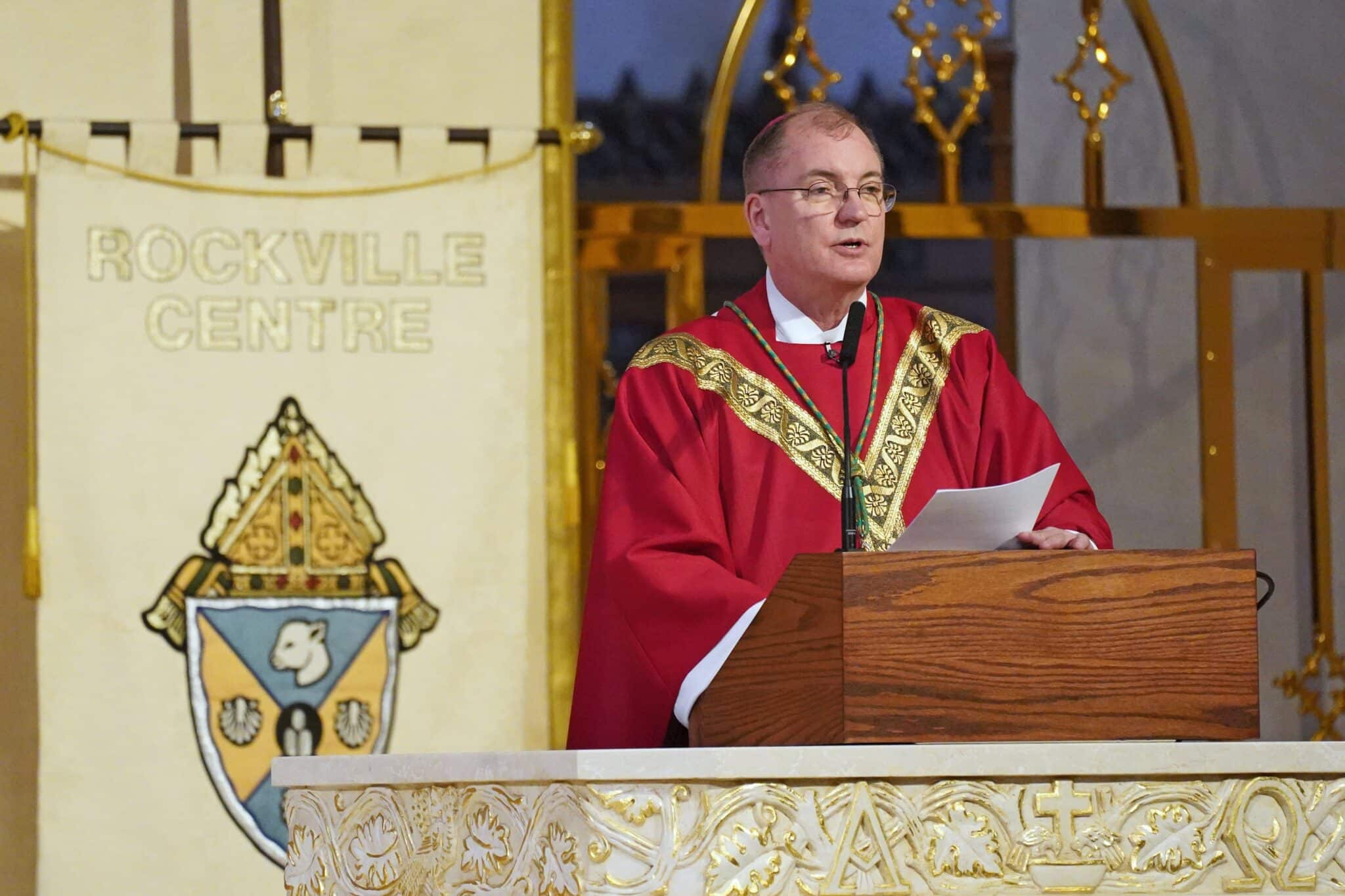
Possible ‘showdown’ ahead as NY diocese moves to scrap bankruptcy in impasse with abuse claimants

Showing Compassion in the Workplace
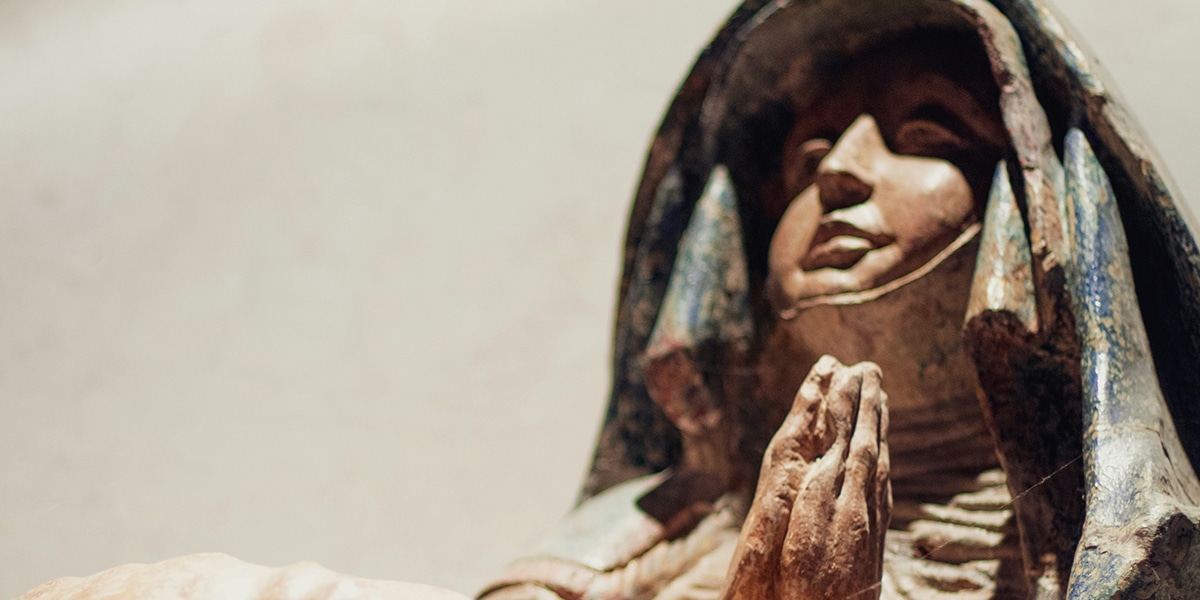
Mary, Ever Present
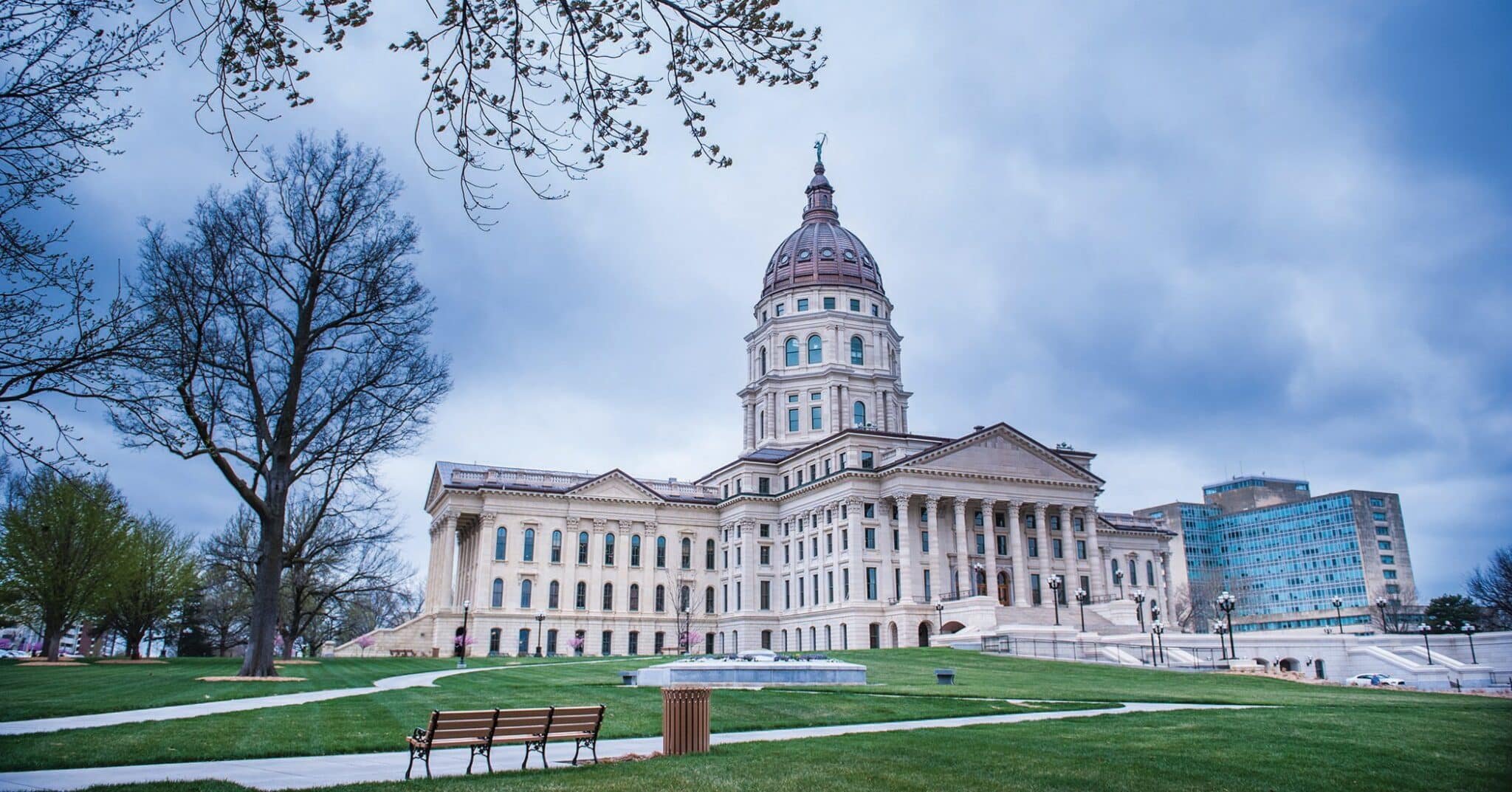
Kansas Legislature successfully overrides governor’s vetoes of 4 pro-life measures

Finding Delight amid the Gloom
CELEBRATION OF VESPERS FOR THE FEAST OF THE PRESENTATION OF THE LORD ON THE OCCASION OF THE 15th DAY OF CONSECRATED LIFE
HOMILY OF HIS HOLINESS BENEDICT XVI
Vatican Basilica Wednesday, 2 February 2011
( Video ) Photo Gallery
Dear Brothers and Sisters,
On today’s Feast we contemplate the Lord Jesus, whom Mary and Joseph bring to the Temple “to present him to the Lord” (Lk 2:22). This Gospel scene reveals the mystery of the Son of the Virgin, the consecrated One of the Father who came into the world to do his will faithfully ( cf . Heb 10:5-7).
Simeon identifies him as “a light for revelation to the Gentiles” (Lk 2:32) and announces with prophetic words his supreme offering to God and his final victory ( cf . Lk 2:32-35). This is the meeting point of the two Testaments, Old and New. Jesus enters the ancient temple; he who is the new Temple of God: he comes to visit his people, thus bringing to fulfilment obedience to the Law and ushering in the last times of salvation.
It is interesting to take a close look at this entrance of the Child Jesus into the solemnity of the temple, in the great comings and goings of many people, busy with their work: priests and Levites taking turns to be on duty, the numerous devout people and pilgrims anxious to encounter the Holy God of Israel. Yet none of them noticed anything. Jesus was a child like the others, a first-born son of very simple parents.
Even the priests proved incapable of recognizing the signs of the new and special presence of the Messiah and Saviour. Alone two elderly people, Simeon and Anna, discover this great newness. Led by the Holy Spirit, in this Child they find the fulfilment of their long waiting and watchfulness. They both contemplate the light of God that comes to illuminate the world and their prophetic gaze is opened to the future in the proclamation of the Messiah: “ Lumen ad revelationem gentium !” (Lk 2:32). The prophetic attitude of the two elderly people contains the entire Old Covenant which expresses the joy of the encounter with the Redeemer. Upon seeing the Child, Simeon and Anna understood that he was the Awaited One.
The Presentation of Jesus in the Temple is an eloquent image of the total gift of one’s life for all those, men and women, who are called to represent “ the characteristic features of Jesus — the chaste, poor and obedient one” (Post-Synodal Apostolic Exhortation, Vita Consecrata , n. 1) in the Church and in the world, through the evangelical counsels. For this reason Venerable John Paul II chose today’s Feast to celebrate the Annual World Day of Consecrated Life.
In this context, I would like to offer a cordial and appreciative greeting to Archbishop João Braz de Aviz, whom I recently appointed Prefect of the Congregation for Institutes of Consecrated Life and Societies of Apostolic Life, along with the Secretary and the co-workers. I also greet with affection the Superiors General present and all the consecrated people.
I would like to suggest three brief thoughts for reflection on this Feast. The first: the evangelical image of the Presentation of Jesus in the Temple contains the fundamental symbol of light; the light that comes from Christ and shines on Mary and Joseph, on Simeon and Anna, and through them, on everyone. The Fathers of the Church connected this radiance with the spiritual journey. The consecrated life expresses this journey, in a special way, as “ philokalia ”, love of the divine beauty, a reflection of God’s divine goodness ( cf . ibid ., n. 19). On Christ’s Face the light of such beauty shines forth.
“The Church contemplates the transfigured face of Christ in order to be confirmed in faith and to avoid being dismayed at his disfigured face on the Cross.... she is the Bride before her Spouse, sharing in his mystery and surrounded by his light. This light shines on all the Church’s children.... But those who are called to the consecrated life have a special experience of the light which shines forth from the Incarnate Word. For the profession of the evangelical counsels makes them a kind of sign and prophetic statement for the community of the breth-ren and for the world” ( ibid ., n. 15).
Secondly, the evangelical image portrays the prophecy, a gift of the Holy Spirit. In contemplating the Child Jesus, Simeon and Anna foresee his destiny of death and Resurrection for the salvation of all peoples and they proclaim this mystery as universal salvation.
The consecrated life is called to bear this prophetic witness, linked to its two-fold contemplative and active approach. Indeed consecrated men and women are granted to show the primacy of God, passion for the Gospel practised as a form of life and proclaimed to the poor and the lowliest of the earth.
“Because of this pre-eminence nothing can come before personal love of Christ and of the poor in whom he lives.... True prophecy is born of God, from friendship with him, from attentive listening to his word in the different circumstances of history” ( ibid ., n. 84).
In this way the consecrated life in its daily experience on the roads of humanity, displays the Gospel and the Kingdom, already present and active.
Thirdly, the evangelical image of the Presentation of Jesus in the Temple demonstrates the wisdom of Simeon and Anna, the wisdom of a life completely dedicated to the search for God’s Face, for his signs, for his will; a life dedicated to listening to and proclaiming his word. “ Faciem tuam, Domine, requiram : ‘Your face, Lord, do I seek’ (Ps 27 [26]:8).... Consecrated life in the world and in the Church is a visible sign of this search for the face of the Lord and of the ways that lead to the Lord ( cf . Jn 14:8) .... The consecrated person, therefore, gives witness to the task, at once joyful and laborious, of the diligent search for the divine will” ( cf . Congregation for the Institutes of Consecrated Life and Societies of Apostolic Life, Instruction The Service of Authority and Obedience. Faciem tuam, Domine, requiram [2008], n. 1).
Dear brothers and sisters, may you be assiduous listeners to the word, because all wisdom concerning life comes from the word of the Lord! May you seek the word, through lectio divina, since consecrated life “is born from hearing the word of God and embracing the Gospel as its rule of life. A life devoted to following Christ in his chastity, poverty and obedience thus becomes a living ‘exegesis’ of God’s word. The Holy Spirit, in whom the Bible was written, is the same Spirit who illumines the word of God with new light for the Founders and Foundresses. Every charism and every Rule springs from it and seeks to be an expression of it, thus opening up new pathways of Christian living marked by the radicalism of the Gospel” (Post-Synodal Apostolic Exhortation Verbum Domini , n. 83).
Today, especially in the more developed societies, we live in a condition often marked by a radical plurality, by the progressive marginalization of religion in the public sphere and by relativism which touches the fundamental values. This demands that our Christian witness be luminous and consistent and that our educational effort be ever more attentive and generous.
May your apostolic action, in particular, dear brothers and sisters, become a commitment of life that with persevering enthusiasm attains to Wisdom as truth and as beauty, the “splendour of the truth”. May you, with the wisdom of your life and with trust in the inexhaustible possibilities of true education, guide the minds and hearts of the men and women of our time towards a “good life according to the Gospel”.
At this moment, my thoughts turn with special affection to all of the consecrated men and women throughout the world and I entrust them to the Blessed Virgin Mary :
O, Mary, Mother of the Church, I entrust all consecrated people to you, that you may obtain for them the fullness of divine light: may they live in listening to the Word of God, in the humility of following Jesus, your Son and our Lord, in the acceptance of the visit of the Holy Spirit, in the daily joy of the Magnificat , so that the Church may be edified by the holy lives of these sons and daughters of yours, in the commandment of love. Amen.
© Copyright 2011 - Libreria Editrice Vaticana
Copyright © Dicastero per la Comunicazione - Libreria Editrice Vaticana
Luke 2:21-40 New Living Translation
Jesus is presented in the temple.
21 Eight days later, when the baby was circumcised, he was named Jesus, the name given him by the angel even before he was conceived.
22 Then it was time for their purification offering, as required by the law of Moses after the birth of a child; so his parents took him to Jerusalem to present him to the Lord. 23 The law of the Lord says, “If a woman’s first child is a boy, he must be dedicated to the Lord .” [ a ] 24 So they offered the sacrifice required in the law of the Lord—“either a pair of turtledoves or two young pigeons.” [ b ]
The Prophecy of Simeon
25 At that time there was a man in Jerusalem named Simeon. He was righteous and devout and was eagerly waiting for the Messiah to come and rescue Israel. The Holy Spirit was upon him 26 and had revealed to him that he would not die until he had seen the Lord’s Messiah. 27 That day the Spirit led him to the Temple. So when Mary and Joseph came to present the baby Jesus to the Lord as the law required, 28 Simeon was there. He took the child in his arms and praised God, saying,
29 “Sovereign Lord, now let your servant die in peace, as you have promised. 30 I have seen your salvation, 31 which you have prepared for all people. 32 He is a light to reveal God to the nations, and he is the glory of your people Israel!”
33 Jesus’ parents were amazed at what was being said about him. 34 Then Simeon blessed them, and he said to Mary, the baby’s mother, “This child is destined to cause many in Israel to fall, and many others to rise. He has been sent as a sign from God, but many will oppose him. 35 As a result, the deepest thoughts of many hearts will be revealed. And a sword will pierce your very soul.”
The Prophecy of Anna
36 Anna, a prophet, was also there in the Temple. She was the daughter of Phanuel from the tribe of Asher, and she was very old. Her husband died when they had been married only seven years. 37 Then she lived as a widow to the age of eighty-four. [ c ] She never left the Temple but stayed there day and night, worshiping God with fasting and prayer. 38 She came along just as Simeon was talking with Mary and Joseph, and she began praising God. She talked about the child to everyone who had been waiting expectantly for God to rescue Jerusalem.
39 When Jesus’ parents had fulfilled all the requirements of the law of the Lord, they returned home to Nazareth in Galilee. 40 There the child grew up healthy and strong. He was filled with wisdom, and God’s favor was on him.
- 2:23 Exod 13:2 .
- 2:24 Lev 12:8 .
- 2:37 Or She had been a widow for eighty-four years.
Holy Bible , New Living Translation, copyright © 1996, 2004, 2015 by Tyndale House Foundation. Used by permission of Tyndale House Publishers, Inc. , Carol Stream, Illinois 60188. All rights reserved.

Bible Gateway Recommends

3 Key Lessons from Jesus in the Temple
Jesus did more than just scare his mom and drive out cheapskates. He set the standard of having a burning faith in the Church. He set the example to fight for faith, injustice, and loving the lost. Here are three key lessons about faith from Jesus in the temple.

We have a saying around our house, “If mama ain’t happy, then nobody’s happy.” I often think of Jesus in the temple and think we need the same phrase, “ If Jesus ain’t happy…” Especially when Jesus walked the earth and cleansed the temple shortly before His death and resurrection.
Then there was the first time He challenged His parents and stayed behind in the city from His family who had left to travel home. Jesus was 12 and nowhere to be found in their caravan. He definitely gave His mother a heart attack, only to stun her when she found Him sitting among the elders as He simply stated, “Didn’t you know I had to be in my Father’s house?”
In today’s world, we are divided between doctrines, masks, vaccines, personal views, how the Church should be run, and of course, political parties. Everywhere you turn, individuals have strong opinions about the Church, faith, deconstruction of faith, and so much more. The very fabric of our faith is being torn, frayed, and unraveled. But…once the feelings settle, our minds clear, and then we get quiet; we feel His presence as we pray for Jesus to come for His people and heal this broken world. We sit in the quiet and reflect on His life.
His example reveals He was more than a man and He went against the grain of society. But it’s more than that. He taught us what faith looks like in action with a heart for God, the Church, and mankind. Jesus did more than just scare his mom and drive out cheapskates. He set the standard of having a burning faith in the Church. He set the example to fight for faith, injustice and loving the lost. Here are three key lessons about faith from Jesus in the temple.
Jesus' Example of Faith
"For we walk by faith, not by sight." 2 Corinthians 5:7
Those words seem simple enough. But what does it mean? In today’s world where there is more division than ever, I am learning that fleshing out these words is more complex. Yet, at its core, it’s simple. Faith means having tremendous confidence in God. It means courage and strength. It means unending grace. It also means standing up for what is pure, true, and right. It means believing the Bible is the key to nourishing our souls and the Church is a place to shine our light—not just outside its four walls but also within. Faith means you’re willing to look like a fool, willing to be misunderstood, abandoned, and become an outcast. It also means giving up any semblance of control over your life because you know the Author of your story is still writing it, knowing He knows the outcome. Why? Because at its core, faith is believing that “we walk by faith and not by sight.”
Jesus in the Temple Bible Story
"So then, faith comes by hearing, and hearing from the Word of God." Romans 10:17
Matthew 21:12-17 and John 2:13-22 tell the story of Jesus cleansing the Temple. The two passages may have been two different instances of Jesus cleansing the Temple, but they teach similar principles. Jesus had come to be the bridge between humanity and God. Jesus came because He knew we needed a savior. Yet, the Law was standing in the way. At the time, those who wanted to be righteous knew they needed to be pardoned for their sins. The Law required a sacrifice in the form of birds, lambs, cows, and oxen. Those who went to the temple to honor the Lord and seek His pardon knew they needed to bring a blood sacrifice. This blood sacrifice meant passing their sins onto the animal. Thus, commercialism and exhorting the pour began ( Exodus 30:11-16 ; Leviticus 14:22 ; Luke 2:24 ).
When Jesus entered the Temple , He assumed He would see people praying for needs, pardons, and finding the purest way to honor God. Instead, He saw a marketplace as a stumbling block and gate blocking humanity’s need from God. He saw corrupt, abusive, ungodly men as moneychangers, sellers of merchandise, and how others made God’s house of prayer into an abusive and lucrative place to extort those in need. At the time Jewish law was under the rule of Romans which meant “half a shekel” of Jewish coin needed to be changed into Roman coin ( Exodus 30:11-16 ). It became a matter of convivence to have a place where Roman coins could be exchanged for Jewish coins. The moneychangers provided this convenience but would demand a fee for the money exchange. Because thousands would travel from all over for Passover and feasts, money changing became a profitable business that became a gate, blocking the oppressed and poor via fraud and exhortation.
Jesus’ first cleansing of the temple is described in John 2:11-12 as having occurred just after Jesus’ first miracle, the turning of water into wine at the wedding in Cana. The second cleansing of the temple occurred just after Jesus’ triumphal entry into Jerusalem the last week of His life. This second cleansing is recorded in Matthew, Mark, and Luke but not in John. John 2:14-15 notes, "In the temple he found those who were selling oxen and sheep and pigeons, and the money-changers sitting there. And making a whip of cords, he drove them all out of the temple.
But here is the twist in the story, this wasn’t the only time Jesus was found in the temple. In Luke 2:41-52 , Jesus purposely stayed behind to be in His Father’s House. “Each year Jesus’ parents went to Jerusalem for the feast of Passover, and when he was twelve years old , they went up according to festival custom. After they had completed their days, as they were returning, the boy Jesus remained behind in Jerusalem, but his parents did not know it. Thinking that he was in the caravan, they journeyed for a day and looked for him among their relatives and acquaintances, but not finding him, they returned to Jerusalem to look for him.”
Key Lessons from Jesus in the Temple
What is it about this about finding Jesus in the temple which is of such significance? First, Jesus was already well aware of His identity and Mission. He was comfortable in His Father's House, the temple, and His teaching was already compelling. Even to the teachers in the temple at the mere age of twelve. Later, when he drove out the money changers, He was obliterating all obstacles to God. Here are the 3 lessons we can learn.

10 Verses that Remind Us Who God Says We Are
1. Jesus Was Intent on Purifying the Church
Compared to the priests and Pharisees , Jesus was bent on purifying the church.
John 2:14-16 tells us,
"And He found in the temple those who sold oxen and sheep and doves, and the money changers doing business. When He had made a whip of cords, He drove them all out of the temple, with the sheep and the oxen, and poured out the changers' money and overturned the tables. And He said to those who sold doves, "Take these things away! Do not make My Father's house a house of merchandise!""
Compared to today’s churches that are focused on growth and becoming mega-churches, Jesus cared more about why people were attending instead of how many people attended. He cared more about who was coming to the Temple instead of how many people were coming. Jesus said His house was to be a House of prayer. He wanted His people to come with the focus of connecting with God and praying to God.
2. Nothing Is More Important Than the Kingdom of God
What is the real Kingdom of God? We are. When Jesus took our place on the cross, He became the bridge between us and God’s Kingdom. God resides within each of our hearts and someday God’s kingdom will come after He transforms the world with a new heaven and a new earth. When religious leaders asked when God’s Kingdom would be established (thinking God would wipe out the Romans who were ruling over them at the time). In Luke 17:20-21 Jesus “answered them and said, ‘The kingdom of God does not come with observation; nor will they say, “See here!” or “See there!” For indeed, the kingdom of God is within you.’” Jesus declared in Matthew 6:33 , “But seek first the kingdom of God and His righteousness, and all these things shall be added to you.” Instead of running after what we think we need or want, we should be pursuing God’s Kingdom, because God will take care of our wants and needs.
3. People Are More Valuable Than Money
Jesus demonstrated that people were more important and precious than profits. His righteous anger revealed His heart for His people. Jesus went on to tell the disciple the second greatest commandment as well: “You shall love your neighbor as yourself” ( Matthew 22:39 ). The truth is we are lovers of ourselves when Jesus taught that we are to love our neighbors as much as ourselves. Jesus takes loving others even further in Luke 6:27 : “But I say to you who hear: Love your enemies, do good to those who hate you.” That’s right; according to the Son of God , we’re supposed to even love our enemies!
When we apply these lessons to our lives, we can further God’s Kingdom and extend His invitation to others. We can in turn be a living Temple that shines a light in this dark world. We have the opportunity to shine His light while there is still time. In turn, our lives will be filled with His abundance of joy.
Was Jesus Justified in Overturning the Tables?
What is godly anger.
“We all have things that irritate us, and we display our anger in different ways. Yet research has proven that it is not good to be angry. One study found that bad-tempered people are three times more likely to have heart attacks. And a 2006 Harvard study revealed that 10 million men in the U.S. are so angry, they are sick. In fact, their disease has a name: Intermittent Explosive Disorder (IED). Having said all that, not all anger is bad. The Bible records a time when Jesus Christ , God incarnate, was angry. Very angry. After making His triumphal entry into Jerusalem with crowds cheering and palm branches waving, Jesus "went into the temple and began to drive out those who bought and sold in it, saying to them, ‘It is written, "My house is a house of prayer," but you have made it a "den of thieves" ' " ( Luke 19:45-46 ). Was Jesus having a temper tantrum? Hardly. It was righteous indignation. He went into the temple. He took stock of the situation. And He overturned tables. Why such a display of anger? Because the people engaged in temple commerce were keeping others from God. They had a little racket going in which they found fault with the sacrificial animals the people brought in and then sold them an "approved" animal at an inflated price. And this made Jesus angry. God is angry when people stand in the way of sinners coming to know Him. God doesn't like it when we get in the way, and it happens all too often in the church. But the church is not supposed to be a museum for saints; it is supposed to be a hospital for sinners—a place for people to know God.”
- Taken from " When Jesus Got Angry " written by Greg Laurie, distributed by Harvest Ministries (used by permission).
Photo Credit: ©GettyImages/wynnter

Learn more about the meaning and significance behind the Easter holiday and Holy Week celebrations:
What is Lent? and When Does Lent Start? What is Ash Wednesday? and When is Ash Wednesday? What is Palm Sunday? What is Maundy Thursday? What is Good Friday? and When is Good Friday? What is Holy Saturday?
What is Easter? and When is Easter Sunday? Easter Bible Verses The Resurrection of Jesus Easter Prayers

What Is the National Day of Prayer?

Is Satisfaction Guaranteed for Christians?
Is Masturbation a Sin?
Morning Prayers to Start Your Day with God
The Best Birthday Prayers to Celebrate Friends and Family
31 Powerful Night Prayers to Pray for Rest in the Evening
It involves setting aside our preconceived notions and intellectual barriers, allowing ourselves to be enveloped by the mystery and majesty of God’s presence.
Bible Baseball
Play now...
Saintly Millionaire
Bible Jeopardy
Bible Trivia By Category
Bible Trivia Challenge
A meditative guide to the Presentation of Jesus in the Temple
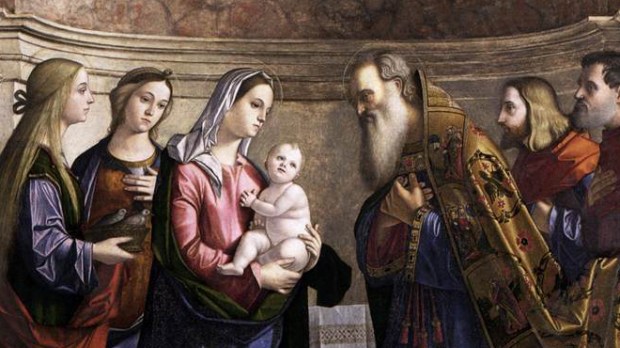
Public Domain
When reading the Bible, many scenes are described very briefly, with very few details. This makes it relatively easy to pass over an important event quickly, missing the depth of the symbolism hidden in the story.
One of the best things we can do is slowly read the Bible, chewing on every word and even placing ourselves into the scene. When we do this with our imagination, we can discover spiritual truths that we didn’t expect to find.
Here is a meditative guide to the event of Jesus’ presentation in the Temple, as laid out in The little book of the most holy child Jesus . It presents a beautiful meditation, allowing us time to think about every aspect of the biblical event and allow God’s grace to invade our hearts.
Let us enter the Temple of Jerusalem. The one great house of the true God in all the earth. Bright and rich with gold and colour and curious work. The house of prayer, the one place of sacrifice. The great altar of God stands there. Crowds pass to and fro to bring their offerings or to join in the never-ending worship. Unheeded through the crowds—unheeded because so lowly and quiet—a pair go up to the place of offering. A maiden bearing in her arms a Babe. By her side a staid and thoughtful man. They are Mary and Joseph, and they bring the little Jesus into the Temple. No longer the gloomy cave. The Holy Child and His parents pass through the crowds in the stately courts of the Temple, their hearts overflowing with joy and peace; but so quiet and of such low estate are they, that none seem to notice them. Yet that Babe is the Lord of the Temple, Lord of heaven and earth, of all creation. Heaven itself cannot contain His glory, nor countless angels worship Him enough or sound the praises due to Him. It is His will to be offered thus for the love of us, with all His glory hidden, in His Temple on earth. It is His will because it is the will of the Father who has loved us with an everlasting love. The crowds know not, as they press by, that it is their Savior and God. Yet Mary, whose only thought is to do the will of her Son, knows that she is offering a gift beyond all price, at once her first-born Son and her God. Aged Simeon, the holy servant of God, for years and years has come daily to the Temple with the hope of seeing this holy Babe. He was told by the Holy Spirit that he should not die before he had this great joy And now he takes the Child, his Lord, in his arms, a peaceful calm flows in upon his soul, and he is ready to die when the good God wills. Anna, too, the aged Prophetess, for this also had waited in the Temple for long years. Now she sees her heart’s desire. She reveals the Holy Child to the Jews; but little do they heed. They are taken up with this world, and love its pomps and grandeur so well that when they look upon its Lord and Maker they see but a little Infant like any other child of men. A poor Infant in a young maiden’s arms, Jesus, Thou art come to do Thy Father’s will. I desire to do that holy will in all things, whatever it may cost. I offer myself to Thee; do with me what Thou seest best, now and for evermore.
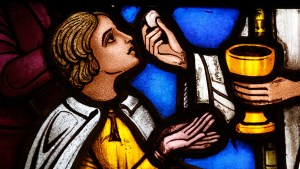
Articles like these are sponsored free for every Catholic through the support of generous readers just like you.
Help us continue to bring the Gospel to people everywhere through uplifting Catholic news, stories, spirituality, and more.


The Significance Of The Temple In Jesus’S Life
The temple in Jerusalem played a pivotal role in the life and ministry of Jesus Christ. As the center of Jewish worship and tradition, Jesus’s interactions with the temple shaped his mission and message in profound ways.
This article will explore the deep meaning behind Jesus’s experiences at the temple, from his presentation there as an infant to his teachings within its courts as an adult.
Jesus’s Presentation at the Temple as an Infant
The importance of the presentation ritual.
According to the Jewish law, 40 days after the birth of a firstborn male child, the parents were required to bring the child to the temple in Jerusalem to present him to God. This ritual was known as the redemption of the firstborn and involved making an offering to redeem the child as belonging to God (Luke 2:22-24).
This demonstrated the parents’ faithfulness in following the law. It also symbolized the consecration of the child to God’s service. Though Jesus was the Son of God, his earthly parents Mary and Joseph still observed this ritual in obedience to the law.
The presentation and redemption ritual originates from the time when God struck down the firstborn sons of Egypt but spared the Israelites during the final plague before the exodus (Exodus 13:2,11-16). God then claimed all firstborn sons and male animals as his own possession.
However, he allowed the firstborn sons to be redeemed or brought back to the family through an offering. This was a powerful reminder to the Israelites of God’s mercy and grace in sparing them and bringing them out of slavery.
Simeon and Anna’s Prophecies
When Mary and Joseph brought the infant Jesus to the temple, they encountered two devout elderly people, Simeon and Anna, who uttered prophecies about the child. The Holy Spirit had revealed to Simeon that he would see the Messiah before he died.
When Simeon saw Jesus, he took the child in his arms and praised God, saying that his eyes had seen God’s salvation (Luke 2:25-35). His prophecy highlighted that this child was the fulfillment of Israel’s hopes and the Savior for both Jews and Gentiles.
The prophetess Anna who served in the temple also recognized Jesus as the redeemer and praised God (Luke 2:36-38). She proclaimed the news about Jesus to all who were awaiting the Messiah’s coming. Both Simeon and Anna’s prophetic words affirmed that this infant was no ordinary child but rather the promised Messiah who would bring redemption and salvation.
Though Jesus was just a baby, his divine identity and purpose were already being confirmed.
The temple setting is significant here as it emphasizes Jesus’ Jewish heritage and his fulfillment of the Jewish law and prophecies even as a child. The revelation to Simeon and Anna also shows that the Holy Spirit was actively working to identify Jesus as the Christ.
Overall, this temple visit marks an important milestone in the early life of Jesus.
Jesus Teaching at the Temple as a Child
Amazing the religious teachers.
At the young age of 12, Jesus traveled with his parents to Jerusalem to celebrate the Passover feast (Luke 2:41-52). While there, Jesus slipped away to sit among the teachers in the temple courts, listening to them and asking insightful questions.
The teachers were astonished at His depth of understanding and ability to discuss complex theological issues (Luke 2:47). This early temple visit foreshadowed Jesus’ future ministry as a great teacher who would challenge religious assumptions and revolutionize theological thinking.
The teachers in the temple were likely blown away by Jesus’ grasp of the Torah and prophets at such a tender age. His incisive questions indicated that He already had an extraordinary comprehension of Jewish theology.
The rabbis probably realized they were witnessing an exceptionally gifted Child with immense promise as a religious leader. While they had devoted their lives to studying the sacred texts, this 12 year old boy matched and even surpassed their knowledge without any formal training.
Foreshadowing His Future Ministry
This childhood temple visit anticipates several key aspects of Jesus’ later public ministry. First, it shows Jesus stepping into the role of teacher, engaging religious leaders on theological issues. This foreshadows His future teaching ministry where great crowds would gather to learn from Him (Mark 10:1).
Second, it reveals Jesus as someone grounded in the Scriptures with an unusual ability to discern their meaning. This would continue as the basis for His powerful preaching (Luke 4:16-22).
Finally, this episode shows young Jesus affirming the temple as His “Father’s house,” becoming intensely preoccupied with its work (Luke 2:49). As an adult, He would zealously cleanse the temple courts rather than allowing inappropriate activities there (Matthew 21:12).
Just as His questions and answers amazed the rabbis, His authoritative words and actions as an adult teacher would astonish people and stir public controversy.
So this intriguing episode provides a brief preview of Jesus’ unfolding mission. His evident wisdom as an adolescent foreshadowed His profound teachings that would draw many to follow Him. The teachers’ astonishment anticipated the crowds’ reactions of awe and wonder at His message (Matthew 7:28).
Clearly, at just 12 years old, Jesus already exhibited an inkling of His divine purpose and stellar, world-changing destiny.
Jesus Driving Out Money Changers from the Temple
A bold act of zeal for god’s house.
Jesus took a bold stand for the sanctity of God’s house when he drove out the money changers and merchants from the temple courts (Matthew 21:12-13). This zealous act fulfilled Old Testament prophecies about the Messiah’s cleansing of the temple (Psalm 69:9; Malachi 3:1-3).
According to the Gospel accounts, Jesus angrily overturned the tables of the money changers and demanded that merchants stop turning his Father’s house into a marketplace.
This confrontational episode reflects Jesus’ passion for proper worship of God. He would not tolerate the commerce and corruption that was taking place in the temple precincts. By disrupting business operations, Jesus made a statement that honoring God takes priority over profits and wealth.
His forceful ejection of merchants was also a symbolic cleansing of sin and impurity from the temple. Ultimately, Jesus’ protective love for his Father’s house cost him his life, but it showed where his priorities lay.
Fulfillment of Messianic Prophecy
Jesus’ cleansing of the temple powerfully fulfilled Old Testament prophecies about the coming Messiah. Well before Jesus’ ministry, the prophet Malachi foretold that the Lord would “suddenly come to his temple” and “purify the sons of Levi” as a “refiner’s fire” (Malachi 3:1-3).
Centuries later, Jesus abruptly entered the temple and zealously drove out corruption, just as Malachi had predicted. The money changers and merchants were part of the priestly tribe of Levi, so Jesus’ confrontation purified the Levites, again matching Malachi’s prophecy.
Additionally, Psalm 69 contains verses prophetically depicting the Messiah’s great devotion for God’s house and his zeal against those who defile it (Psalm 69:9). Jesus embodied these prophetic words when he overturned the merchant tables in righteous indignation for his Father’s house.
Thus, he powerfully declared himself as the long-awaited Messiah who would cleanse and restore proper worship in the temple, just as the ancient prophets had foretold so long ago.
Jesus’s Eschatological Temple Discourse
Prophecy of the temple’s destruction.
In the synoptic gospels, Jesus predicted the destruction of the Second Temple in Jerusalem. This prophecy is recorded in Matthew 24:1-2, Mark 13:1-2, and Luke 21:5-6. Jesus stated that not one stone of the Temple buildings would be left standing on top of another.
This prophecy was fulfilled around 70 AD when the Romans sacked Jerusalem and demolished the Temple. Josephus, the first-century Jewish historian, provides details on how the Temple was burned and completely torn down by the Romans.
The total destruction shocked the Jewish people who could not imagine a world without the central place of worship. However, Jesus predicted this devastating event and used it to stress the temporary nature of the physical Temple.
His eschatological discourse points to himself as the true and greater Temple.
Promise of the Temple’s Restoration
While prophesying the Temple’s destruction, Jesus also promised its restoration. In John 2:19, Jesus said, “Destroy this temple, and I will raise it again in three days.” Here he referred to his body as the true Temple.
After his crucifixion, Jesus rose from the dead on the third day, fulfilling this promise. Jesus claimed to be the fulfillment of God’s presence and the place of worship for God’s people. Through his death and resurrection, Jesus became the everlasting Temple where people can meet God.
The book of Revelation depicts the glorious heavenly Temple in the New Jerusalem that comes down to earth (Revelation 21:22). This prophetic vision points to God’s presence dwelling eternally with his people through Christ. The physical Temple pointed to this greater spiritual reality found in Jesus.
As the Messiah, Jesus is the true meeting place between God and humanity. The destruction of the earthly Temple and the building of the eternal, heavenly Temple were pivotal to Jesus’s eschatological message.
Symbolic Connections Between Jesus and the Temple
Jesus as the new temple.
In the Gospels, Jesus is portrayed as the fulfillment of the Temple. He refers to himself as the new Temple, replacing the stone and mortar building that had long been the center of Jewish worship (John 2:19-21).
Just as God’s presence filled the Holy of Holies in the old Temple, Jesus embodied God’s presence in bodily form (John 1:14). His body served as the new meeting place between God and humans.
When Jesus cleared the money changers from the Temple courts (Matthew 21:12-13), He showed His authority over the Temple. As the Son of God, the Temple was rightfully under His jurisdiction. By asserting His control, Jesus further aligned Himself with the Divine presence that indwelt the Holy of Holies.
In a symbolic act, the veil that separated the Holy Place from the Most Holy Place was torn in two at the moment of Jesus’ death (Matthew 27:51). This signified that Jesus’ sacrifice on the cross had opened the way for all people to directly access God’s presence.
No longer would a human high priest need to intercede behind a veil on their behalf.
The Temple Veil Torn at Jesus’s Death
The Gospel writers emphasize the tearing of the Temple veil at the moment of Jesus’ death on the cross (Matthew 27:51; Mark 15:38; Luke 23:45). This thick curtain separated the Holy of Holies from the rest of the Temple complex.
Behind it resided the ark of the covenant, where the presence of God dwelt.
Only the high priest could enter the Holy of Holies, and only once a year on the Day of Atonement. But the torn veil represented free access to God for all. Jesus’ sacrificial death provided welcome entry for anyone into the very throne room of heaven (Hebrews 10:19-20).
The timing of the veil-tearing underscored its connection to Jesus’ crucifixion. The intimate linkage between access to God and Christ’s death on the cross could not be more evident. Jesus’ sacrifice effectively removed the barrier to God’s presence that the Temple veil had represented.
So in rending the veil, God showed that Jesus’ death opened the way for reconciliation with Him. The old system of animal sacrifices and priestly rituals no longer applied. Jesus is the true and living Temple, and His cross serves as the only access point to salvation and relationship with God.
As we have seen, the temple was interwoven throughout Jesus’s life, from his infancy to his last week in Jerusalem. Its courts and colonnades echoed his footsteps and teachings. Its symbolic meaning pointed to his identity and mission as the Messiah.
Understanding the temple’s role sheds light on Jesus’s fulfillment of prophecy and the revolutionary nature of his message. Through his words and actions there, Jesus established a new covenant and phase of worship between God and humanity.
Amanda Williams is a dedicated Christian writer and blogger who is passionate about sharing Biblical truth and encouraging believers in their faith walks. After working as a youth pastor and Bible teacher for several years, she launched her blog in 2022 to minister to Christians online seeking to grow deeper in their relationship with Jesus Christ. When she's not creating content or connecting with readers, Amanda enjoys studying theology, being out in nature, baking, and spending time with family. Her goal is to provide practical wisdom and hope from a genuine Christian perspective. Amanda currently resides in Colorado with her husband, daughter, and two rescue dogs.

Similar Posts

Spiritual Meaning Of Finding A Ring: An In-Depth Exploration
Have you ever stumbled upon a ring unexpectedly, leaving you wondering about its hidden significance? Finding a ring can be a serendipitous event that carries profound spiritual meanings, often serving as a symbolic message from the universe. If you’re short on time, here’s a quick answer to your question: Finding a ring can symbolize new…
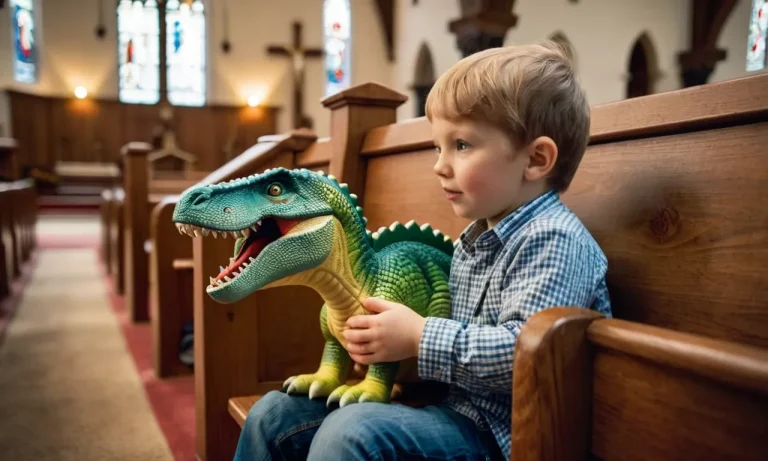
What Does Christianity Say About Dinosaurs?
Dinosaurs have fascinated people for centuries, but where do they fit in with Christian beliefs? As creatures that lived long before humans, dinosaurs present an intriguing challenge to the traditional reading of Genesis. This article will dive into what the Bible and Christian scholars have to say about these prehistoric beasts. If you’re short on…
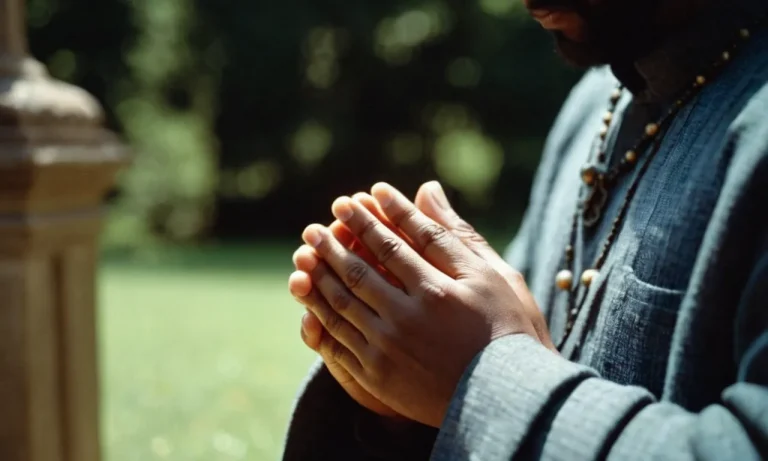
How To Make A Covenant With God
Making a covenant with God is an important step in deepening your relationship with Him. If you feel called to make this commitment, know that God eagerly awaits to enter into an everlasting covenant with you. If you’re short on time, here’s a quick answer to your question: To make a covenant with God, commit…

White Butterfly Meaning Twin Flame: A Comprehensive Guide
Have you ever encountered a white butterfly fluttering gracefully across your path, leaving you with a sense of wonder and curiosity? In the realm of spiritual symbolism, the appearance of a white butterfly is often associated with the concept of twin flames – a profound and intense soul connection that transcends the boundaries of ordinary…
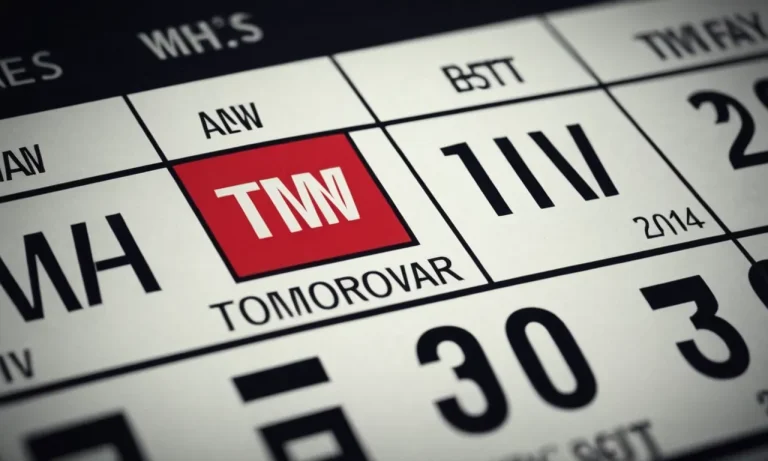
What Does Tmw Mean In Text? A Comprehensive Guide
In the ever-evolving world of digital communication, acronyms and abbreviations have become an integral part of our daily conversations. One such acronym that has gained widespread popularity is ‘TMW,’ but what exactly does it mean? If you’re scratching your head, wondering about the significance of these three letters, you’re not alone. If you’re short on…

What Was Practical Christianity
Practical Christianity refers to living out Christian values in one’s daily life through acts of charity, compassion, service and love. Instead of only professing faith, practical Christianity focuses on actively making the world a better place by serving others just as Jesus served those around him. If you’re short on time, practical Christianity means applying…

- Travel/Study
BIBLE HISTORY DAILY
Mary, simeon or anna: who first recognized jesus as messiah.

THE PRESENTATION IN THE TEMPLE. When Joseph (far left) and Mary (left of center) bring baby Jesus to the Jerusalem Temple, they are greeted by Simeon, who embraces the baby, and Anna, the New Testament’s only prophetess, shown at right with a scroll, in this 1342 tempera painting by Ambrogio Lorenzetti. Simeon instantly and independently recognizes Jesus as messiah. Anna begins to preach: “She came, and began to praise God and to speak about the child to all who were looking for the redemption of Jerusalem.” Both are quicker than Mary to comprehend who Jesus is. Uffizi/Scala/Art Resource, NY
Being first to hear doesn’t always mean being first to understand. In Luke’s birth narrative, Mary is the first to be told that Jesus will be the messiah. Luke adds that she “treasures the words” the angel Gabriel speaks to her. But Mary is also puzzled by the divine message; she is “perplexed” when the angel greets her and must “ponder” the meaning of his words (Luke 1:29; see also 2:19). In this, Mary contrasts sharply with Simeon and Anna, two elderly individuals who happen to be in the Temple when Joseph and Mary bring the infant Jesus to Jerusalem for the first time.
According to Luke 2:22–24, “[Joseph and Mary] brought him up to Jerusalem to present him to the Lord (as it is written in the law of the Lord, ‘Every firstborn male shall be designated as holy to the Lord’ [quoting Exodus 13:2, 12]) and they offered a sacrifice according to what is stated in the law of the Lord, ‘a pair of turtledoves or two young pigeons’ [based on Leviticus 12:2–8].”
At the Temple, the family is approached by a man named Simeon, who has been told by the Holy Spirit that he will not die until he has seen the messiah. (The same Spirit told him to go to the Temple that day, too.) Simeon takes Jesus in his arms and praises God: “Master, now you are dismissing your servant in peace, according to your word; for my eyes have seen your salvation, which you have prepared in the presence of all peoples, a light for revelation to the Gentiles, and for glory to your people Israel” (Luke 2:28–32). Having seen the messiah, Simeon is now prepared to die.

FREE ebook, Who Was Jesus? Exploring the History of Jesus’ Life . Examine fundamental questions about Jesus of Nazareth.
Anna then approaches the Holy Family. She, too, recognizes Jesus as messiah, but she has a very different reaction: “At that moment, she came and began to speak about the child to all who were looking for the redemption of Jerusalem” (Luke 2:38). She is 84 years old, according to Luke, and she does not want to die: She wants to proselytize. Like the disciples who will follow her, she is driven to bear witness to what she has seen. Mary was the first to have the good news announced to her, but Anna is the first woman to understand fully and proclaim the good news.
This is because in addition to being a proselytizer, Anna is a “prophetess” (Luke 2:36). In fact, she is the only woman in the New Testament explicitly described as a “prophetess.” She then stands in the line of figures like the judge, military leader and prophetess Deborah and the Jerusalem prophetess Huldah, who, in the days of King Josiah, was asked to verify that an ancient scroll (a form of Deuteronomy) discovered during Temple renovations was indeed the word of God (2 Kings 22).
Unlike Simeon, Anna is not just visiting the Temple for the day; she is there all the time. According to Luke, Anna “never left the Temple but worshiped there with fasting and prayer night and day” (Luke 2:37). Perhaps she was part of some sort of order of widows (Luke tells us her husband died after only seven years of marriage) who had specific religious functions in the Temple. She may have been able to undertake this role in the Temple because she was no longer in periodic states of ritual impurity caused by menstruation.
Learn more about Anna in Robin Gallaher Branch’s Bible History Daily article “Anna in the Bible.”

Mary startles when Gabriel and God the Father appear in her home and interrupt her prayers. In Lorenzo Lotto’s unusual rendition of the Annunciation, dated to 1535, Mary’s cat is equally frightened by the divine apparition. According to Luke, Mary treasures the angel’s message, but does not fully understand it. Only after years of “pondering the message in her heart” does she become a true follower of Jesus.” Museo Civico, Recanati, Italy/Scala/Art Resource, NY.
Luke may also have seen Anna as the second witness in or around the Temple needed to validate Jesus’ significance. Deuteronomy 19:15 stresses the importance of having two witnesses to validate an event.
The pairing of Simeon and Anna reflects Luke’s penchant for male-female parallelism when he writes about the recipients of divine blessing and salvation. The story of Jesus’ birth is framed by two such stories—that of Elizabeth and Zechariah in Luke 1 and Anna and Simeon in Luke 2. Interestingly, in both, the woman is portrayed as the more positive example of discipleship. The women are not only more receptive to the message, they are more willing to act upon it, with Elizabeth realizing that her cousin is carrying the messiah and praising God for this blessing and Anna spreading the good news.
Alfred Plummer, in his classic commentary on Luke, suggested that the difference between Anna and Simeon provides a clue to Luke as a salvation historian, a chronicler of the mighty acts of God for his people through the ages. Yes, a messiah has arrived, as Simeon recognizes, but, as the prophetess Anna suggests, a new era, with a new and living voice of prophecy, has at the same time dawned. 1 In this new era, the living voice of God will continue to speak about the messianic one. Anna is the first in a line of prophetic disciples who will speak about Jesus to all who were looking for the redemption of Israel.
Not everyone can be a prophet, however. Mary, for example, does not fully understand what Anna immediately recognizes. And she won’t for several years.
Twelve years after the presentation of Jesus in the Temple, the Holy Family returns to Jerusalem and Jesus returns to the Temple, this time by himself. Mary and Joseph search for him frantically for three days. When at last they find him listening to and asking questions of the teachers in the Temple, Mary asks, “Child, why have you treated us like this? Look, your father and I have been searching for you in great anxiety.” Jesus responds, “Did you not know that I must be in my Father’s house?” But, Luke reports, “they did not understand what he said to them … [but] his mother treasured all these things in her heart” (Luke 2:48–51). The late New Testament scholar Raymond Brown wrote: “Luke’s idea is that complete acceptance of the word of God, complete understanding of who Jesus is, and complete discipleship is not yet possible. This will come through the ministry of Jesus and particularly through the cross and resurrection.”
Become a Member of Biblical Archaeology Society Now and Get More Than Half Off the Regular Price of the All-Access Pass!
Explore the world’s most intriguing biblical scholarship.
Dig into more than 9,000 articles in the Biblical Archaeology Society’s vast library plus much more with an All-Access pass.

Clearly, Luke is not painting an idealized portrait of Mary or Joseph. Rather, he paints a very human and realistic picture of Mary and Joseph as good parents, anxious, concerned, striving to be obedient and understanding, but not yet comprehending. Brown adds, however, that “Luke does not leave Mary on the negative note of misunderstanding. Rather in 2.51 [“his mother treasured all these things …”] he stresses her retention of what she has not yet understood and … her continuing search to understand.” 2
Of course, in the end, Luke portrays Mary as successfully making the spiritual journey into the family of faith; in Acts 1:14, when the apostles gather in the upper room after the resurrection and ascension of Jesus, Mary is with them. But the story of Simeon and Anna suggests Mary had much to learn before she could enter into the Kingdom, and into the spiritual family of faith, which they already belonged to, and which is to be the primary family of Jesus in the eschatological age.
Luke’s Christmas story is full of surprising reversals of fortunes and roles, in which outsiders become more intimate associates than family members, and in which women play a more active role then men. In this way Luke both prepares for and signals one of his major themes in the Gospel of Luke and in Acts—the least, the last and the lost are becoming the most, the first and the found with Jesus’ coming. Luke portrays the rise of a form of Judaism that would rely on the testimony of women as well as men, and that would empower them once again to fulfill roles like Miriam of old.
The first Christmas and the Christ child come at a particular point in time, but for many, like Mary and Joseph, the significance of the event is only understood incrementally and over the course of many years. But the prophetic insight into God’s intentions is a gift which keeps on giving and renewing the people of God. And at the outset of a long chain of such prophetic insights stand Simeon and Anna, one satisfied that prophecy has been fulfilled and the other pointing to the future, a future as bright as the promises of God.
“Mary, Simeon or Anna” by Ben Witherington III originally appeared in Bible Review , Winter 2005. The article was first republished in Bible History Daily on February 12, 2013.
1. See Alfred Plummer, Luke , International Critical Commentary (Edinburgh: T & T Clark, 1905), p. 71. 2. Raymond E. Brown and Karl P. Donfried, eds., Mary in the New Testament (Philadelphia: Fortress, 1978), pp. 161–162.

Related reading in Bible History Daily :
Anna in the Bible
The Virgin Mary and the Prophet Muhammad
Who Was Jesus’ Biological Father?
Herod’s Death, Jesus’ Birth and a Lunar Eclipse
All-Access members, read more in the BAS Library :
The Birth of Jesus Mary, Simeon or Anna: Who First Recognized Jesus as Messiah? Before Mary: The Ancestresses of Jesus Not a BAS Library or All-Access Member yet? Join today.
Related Posts

Who Were the Galatians in the Bible?
By: Megan Sauter

The Pax Romana and Maritime Travel
By: Jennifer Drummond

What Is Biblical Greek?
By: John Drummond
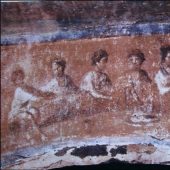
The Last Days of Jesus: A Final “Messianic” Meal
By: James Tabor
33 Responses
While considering Dr. Witherington’s question, I would like to ask, “How about Elizabeth, wife of Zachariah, whose response to Mary’s arrival plainly states that the Spirit revealed to her the identity of the unborn Messiah?” Luke 1:41-43 reads, “When Elizabeth heard Mary’s greeting, the baby leaped in her womb, and Elizabeth was filled with the Holy Spirit. 42 In a loud voice she exclaimed: “Blessed are you among women, and blessed is the child you will bear! 43 But why am I so favored, that the mother of my Lord should come to me? ” If Mary were first to know, then surely Elizabeth was second, or if Mary did not realize, then Eizabeth was first to know.
The presentations by all, are excellent and non-controversial. The wisdom of Almighty God is unsearchable! Romans 11:33-34 and Isaiah 40:28. Fear God, love God and honor God for the multitude of things he has done in our behalf, the love He has given us and the graciousness He has shown us through His Son and the Holy Spirit! God is testing us everyday and has given us the right to make our own choices. May Almighty God, Jesus, The Holy Spirit and Christianity be our guiding lights, our safety nets and our inspiration for loving happiness with Almighty God! Amen!
ben witherington and all readers,
my name is david snyder. i am a veterinarian in texas and i am catholic! i have a tremendous teachin about the physiologic process a body experiences, during crucifixion. i was searching for private visions by people who have had additional explanations, suvh as the annunciation. i know PROTESTANTS don”t credit private interpretations. If you ever want to read something that fills in the blanks an,d plays out like a movie, read MYSTICAL CITY OF GOD by SISTER MARY of AGREEDA. Keeping with SOLO SCIPTURUAE, we have left out the first procession of CORPUS CHRISTI, which is MARY visiting ELIZABETH. SCRIPTURE, proclaims elizabeth asking in wonder, “how is it that the MOTHER of my LORD comes to me?” i could go on and on
Adding to what David said, Two important points, to say the least:
1. Gabriel made it quite clear to Mary who is Jesus: “And behold, thou shalt conceive in thy womb, and shalt bear a son, and shalt call him Jesus. He shall be great, and men will know him for the Son of the most High; the Lord God will give him the throne of his father David, and he shall reign over the house of Jacob eternally; his kingdom shall never have an end.”
2. In response, Mary made it quite clear to Gabriel that she understood: “Behold the handmaid of the Lord; let it be unto me according to thy word.”
3. Mary then announced to Elizabeth (and the world): “My soul magnifies the Lord; my spirit has found joy in God, who is my Saviour, because he has looked graciously upon the lowliness of his handmaid. Behold, from this day forward all generations will count me blessed; because he who is mighty, he whose name is holy, has wrought for me his wonders. He has mercy upon those who fear him, from generation to generation; he has done valiantly with the strength of his arm, driving the proud astray in the conceit of their hearts; he has put down the mighty from their seat, and exalted the lowly; he has filled the hungry with good things, and sent the rich away empty-handed. He has protected his servant Israel, keeping his merciful design in remembrance, according to the promise which he made to our forefathers, Abraham and his posterity for evermore.”
Exactly. Mary knew.
Amen brother! Article states Mary had much to learn before she could enter the kingdom of heaven??? What nonsense.! All those degrees and the guy can’t figure it out.
John in the womb.
GOD THE FATHER, HOLY SPIRIT, JESUS AND MARY AT THE TEMPLE It was Mary and Joseph’s job to bring up Jesus the Son of Man, as Jesus often referred to himself, in the nurture and admonition of the Lord to be a responsible adult in the Jewish culture. It was God the Father’s and Holy Spirit’s job to prepare Jesus until he was ready to start His ministry. At the Temple scene, Mary definatly shows she knows this by how she address him after looking for him for three days. She is not shaking in her boots because inwardly Jesus is the Son of God. Which she knows fullwell, she had pondered this in her heart. God gave her a job to do and she is doing it.
Jesus, the adolecent, wasn’t sining or lying here he was jumping the gun. You can be sure God the father and Holy Spirit let Him know about it. Which scripture acknowledges by saying “Then he went down to Nazareth with them and was obedient to them.” He was obident and honored them for another 18 yrs until the God given time had come and He revelled himself by changing the water into wine at the Cana wedding.
It wasn’t that Mary had forgotten that Jesus was also the Son of God that she didn’t understand. She didn’t understand why he was saying and revelling himself at this age – God had her back on this one!
THE WEDDING AT CANA It is evident from scripture, by the fact that the people in His hometown and His siblings didn’t know He was the Messia (after thirty yrs), that Mary, Joseph or Jesus ever revealed this.
Mary at the Cana wedding sensed, maybe with the Holy Spirit’s nudging, that perhaps this was the time for Jesus to reveall him self in a big way. He had been baptized and already started gathering his disciples.
Instead of the adolecent’s response, Jesus said this time, “my time has not yet come.” Followed immediatly by changing the water into wine.
The song ‘Mary did you know’ yes Mary did know that her son – God’s son – was capable of not only performing miracles but of saving any one who has faith in Him from eternal death and blessing them with eternal life.
A tour to the pyramids of Giza will reveal some fascinating facts about the historical past and tradition of historical Egypt.
And nobody’s recognizing John the Baptist’s “testimony” to knowing who Jesus was…from the womb!
For such a learned scholar he does not read throughly all of Luke. Elizabeth was the first to call Mary the mother of my Lord! Mary also tells the Archangel Gabriel she agrees to having the Son of God. And Mary’s Magnificent states her understanding of what is happening within her. Further Zacharias announces who is son John shall be and who Mary’s Son shall be in his discourse before Jesus or John are even born.
I enjoyed your article and found only one flaw which to some lends itself to your research or thoroughness of it. Luke says of Anna: “And there was Anna … she was of great age, and had lived with an husband seven years from her virginity; And she was a widow fourscore and four years, …” You give Anna the age of 84…however considering girls were approximately 15 when wed, she lived with her husband 7 years and had been a widow 84 years. Anna was about 106 years old – depending upon when she wed. Does not detract from the subject matter, but some would doubt your research capabilities. I am surprised no one else caught this prior to publication.
Good Stuff Ben and I love preaching on Simeon and Anna over the years, thanks. But also wanted to add two points: 1) it is said in the New Testament that Philip had four daughters who prophesied and certainly could be considered prophetesses, with Anna not the only one:
Acts 21:8-9 On the next day we who were Paul’s companions departed and came to Caesarea, and entered the house of Philip the evangelist, who was one of the seven, and stayed with him. Now this man had four virgin daughters who prophesied.
2) I’m not sure why Simeon’s reaponse has to be considered “less than” Anna’s? At least that seems to be what you imply. Hey, if the Holy Spirit tells Simeon he will not die till he sees the Messiah, and if he’s been waiting his entire life perhaps, and he’s faithful and in the temple and he comes and serves as that second witness ~ that may be Gods total will for his life’s ending, different from Anna’s, but just as powerful.
Who are we to really imply something different for the amazing Simeon and his song??!!!
Nicely done Ben. It has provided much food for thought. One issue does provide some hesitation for me though. In referring to Alfred Plummer’s Commentary on Luke, (along with your proposal that Luke’s women were “more positive example’s of discipleship”) you write, “Yes, a messiah has arrived, as Simeon recognizes, but, as the prophetess Anna suggests, a new era, with a new and living voice of prophecy, has at the same time dawned.” That is quite a leap as Luke offers only a one-line summation of her input after he quotes Simeon at length. Furthermore, Joseph seems to be Mary’s equal regarding “getting it.” Let’s not forget that God spoke to Joseph in dreams and he obeyed each time.
I like to think it was the shepherds. They were given a sign – a baby “swaddled, laying in a manger.” If (as some scholars claim) this band of shepherds were those caring for the temple flocks, they would recognize this treatment. (Apparently) this was how new lambs were inspected for defects and kept unmarred for eventual sacrifice for forgiveness of sins. No wonder they “spread the word concerning what had been told them about this child,” (luke 2:17).
Makes sense to me.
OK, so I have a slightly different interpretation when it comes to Joseph and Mary finding Jesus after he’s been missing for three days. Jesus mouthing off to his mother in public after they have been frantic after losing him in a larger metropolitan area for three days. She’s pondering all right, she’s pondering just how hard she’s gonna tan his little hide when she gets him home.
August 22,2014 2:02 am. IVE JUST FINISH READING ANNA IS A PROPHETESS FOUND LUKE 2:36. Your statement says she is the only woman in New Testament explicitly described as a prophetess. Teaching Women of the Bible. we are in the 8th month. Its amazing all the women named or not named. God bless you and your work.
Didn’t Jesus’ family try to kidnap him at one point during his ministry. Doesn’t it say that they thought he had gone mad? Seems to me like they didn’t “get it”.
So you are saying that when the Shepard’s and the wise men came Mary had no idea Jesus was Messiah? Also, what she went through when almost stone, seems many want to believe Mary just forgot all that, As well as, all the towns people. This is a stand that is very difficult for me to follow how one gets there, since Mary was told by Gabriel, John (to be the Baptist) at 6 mos responded, Elizabeth told her, again all the torment when she rtnd from Elizabeth’s, the shepard’s and the wise men– the woman would have had to of had amnesia not to know. Are there verses I have missed about her memory leave her?>
[…] Witherington III’s full letter “Mary, Simeon or Anna: Who First identified Jesus as Messiah?” is permitted on-line during no cost. wish to examine some-more about his analysis? learn […]
Jesus was never the Messiah ! He could not be as he did not fulfill the requirements, i.e. bringing peace to earth and rebuilding the temple. Additionally he was not a direct descendant of David. So what? See who and when the Apostles wrote their stories.
I want to add: each jewish month has exactly 29 days, 12 hours, 44 minutes, 3 1/3 seconds.
we can know when Jesus was born. Zacharias the father of John the baptist was from the house of Abija, we read in Luke 1.5. In Davids time the yearly service of the highpriest priests was divided in 24 houses, each makíng the service in the temple in Jerusalem for half a month. . The house of Abijahs servicetime was the number 8, thus the second half of the 4th month of the jewish year which was about June. The jewish year in ancient Israel times began in spring, the month of Nisan ,which is about our March/April . We then count 3 and a half months from 1. Nisan till the begnning of the service of the house of Abija, which gives us end June as the earliest possible conception date for John, when his father Zacharia went home after his templeservice and went to his wife. 6 months later, thus about December Jesus was conceived in Mary, and born 9 months later which gives us September for the birth of Jesus which is the time of the feast of Sukkoth which is now fullfilled in the coming of the Word of God to dwell among us in a human body: Greek skenos means tent and figuratively the human body . thus the feast of Sukkoth is a symbol for God dwellling among us in Jesus . Hebrew Sukkot is the plural from Suka booth, tent, tabernacle. . The jewish month has only about 29 days .please google the theme here and you will find all detailed informations for what I wrote here.
macys in store coupon april 2013
Mary, Simeon or Anna: Who First Recognized Jesus as Messiah? – Biblical Archaeology Society
macys coupon code
[…] Witherington III’s full essay “Mary, Simeon or Anna: Who First Recognized Jesus as Messiah?” is accessible online for free. Want to learn some-more about his research? Read “Understanding […]
I like the stress on Mary and Joseph as good parents who nevertheless don’t get it. One of the themes of Jesus in the Synoptic tradition seems to be the emphasis that one’s own family can become a stumbling block to their walk of faith. Some of the biggest misunderstandings come from people who are related to Jesus.
I think one of the things Mary was “pondering in her heart” must have related to the Shepherds’ visit at the manger. They likely would have communicated to her the sign they had been given by the angels (you will find the babe swaddled and laying in a manger.). If these shepherds were in charge of birthing the sacrificial lambs for the nearby temple, as some scholars claim, then this sign would present some disturbing images regarding jesus’ future.
Apparently sacrificial lambs were wrapped (swaddled) at birth and lain in a manger as they were being inspected for blemishes that would disqualify them for sacrifice. Keeping them wrapped prevented them from becoming blemished later on. Even modern day shepherds outfit new lambs in protective coats, especially in cold weather. A suffering messiah was not yet on anyone’s radar, so I think Mary indeed had a lot to mull over as she put all the extraordinary information together regarding her first born.
Nice job Susanna! You’re on the money. Plus, even before Mary was with the Apostle’s during Christ’s ressurecction, she also (quite a few years before) told Jesus’ friends (Apostles) to do what he tells them at the wedding in Cana! She knew who he was! That is also why she stood at the cross and did not kneel.
“Both are quicker than Mary to comprehend who Jesus is” This statement seems rather presumptive to me. You seem to have forgotten about Elizabeth’s greeting to Mary many months before Mary met Anna at the temple. Surely you’ll recall how the unborn John the Baptist leaped in his mother’s womb at the presence of Mary and the unborn baby Jesus? Elizabeth proclaims “How is it that the mother of our Lord should come to me?” My bet is even if Mary, as you infer, had no idea who Jesus was, then Elizabeth was the first to notify her of the significance of Jesus. Even better, Mary understood that she had indeed been greatly blessed, and that “all generations would call [her] Blessed.” Anna wasn’t there to tell Mary something she didn’t already know. Seems to me, she was there to let the rest of us know.
I was wondering if you ever thought of changing the structure of your website? Its very well written; I love what youve got to say. But maybe you could a little more in the way of content so people could connect with it better. Youve got an awful lot of text for only having 1 or 2 images.
Maybe you could space it out better?
Write a Reply or Comment Cancel reply
Your email address will not be published. Required fields are marked *
Recent Blog Posts

The Oracle of Delphi—Was She Really Stoned?
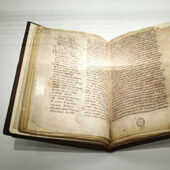
Text Treasures: The Pilgrimage of Egeria

Ancient Samaria and Jerusalem
Must-read free ebooks.
50 Real People In the Bible Chart
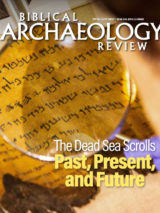
The Dead Sea Scrolls: Past, Present, and Future

Biblical Peoples—The World of Ancient Israel

Who Was Jesus? Exploring the History of Jesus’ Life
Want more bible history.
Sign up to receive our email newsletter and never miss an update.
By submitting above, you agree to our privacy policy .
All-Access Pass
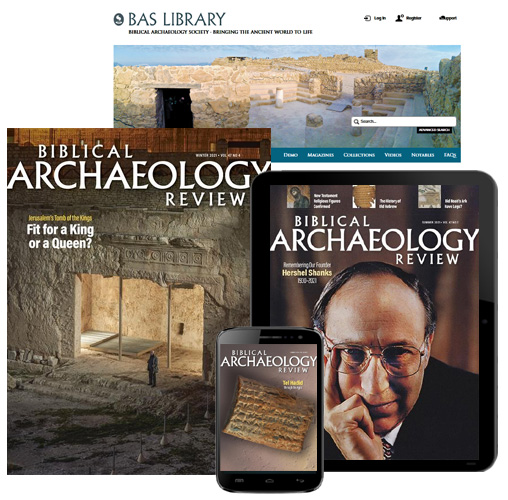
Dig into the world of Bible history with a BAS All-Access membership. Biblical Archaeology Review in print. AND online access to the treasure trove of articles, books, and videos of the BAS Library. AND free Scholar Series lectures online. AND member discounts for BAS travel and live online events.
Signup for Bible History Daily to get updates!
EWTN News, Inc. is the world’s largest Catholic news organization, comprised of television, radio, print and digital media outlets, dedicated to reporting the truth in light of the Gospel and the Catholic Church.
- National Catholic Register
- News Agencies
- Catholic News Agency
- CNA Deutsch
- ACI Afrique
- ACI Digital
- Digital Media
- ChurchPOP Español
- ChurchPOP Italiano
- ChurchPOP Português
- EWTN News Indepth
- EWTN News Nightly
- EWTN Noticias
- EWTN Pro-life Weekly
- Register Radio
Get HALF OFF the Register!
National Catholic Register News https://www.ncregister.com/blog/what-s-happening-at-the-presentation-of-the-lord

- Synod on Synodality
- Most Popular
- Publisher’s Note
- College Guide
- Commentaries
- Culture of Life
- Arts & Entertainment
- Publisher's Note
- Letters to the Editor
- Support the Register
- Print subscriptions
- E-Newsletter Sign-up
- EWTN Religious Catalogue
What’s Happening at the Presentation of the Lord?
Forty days after his birth, Christ was presented at the Temple. Why?

Feb. 2 is the Feast of the the Presentation of the Lord.
We read about the presentation of the Lord in Luke Chapter 2, but the text can be a little mysterious.
What is actually happening there?
Some claim that Luke himself didn't know...
What Luke Says
Here is what Luke (2:22-24) actually says about the event:
And when the time came for their purification according to the law of Moses, they brought him up to Jerusalem to present him to the Lord (as it is written in the law of the Lord, ’Every male that opens the womb shall be called holy to the Lord’) and to offer a sacrifice according to what is said in the law of the Lord, ‘a pair of turtledoves, or two young pigeons.’
He then records the encounters with Simeon and Anna the prophetess, but at the moment our focus is what Luke refers to as “their purification.”
What is he talking about?
The Purification of the Mother
The first thing to note is that Luke is not talking about the time of Jesus' circumcision. That occurred on the eighth day after his birth . Luke has already talked about that and is now referring to a later time.
Specifically, he's talking about the 40th day after Christ's birth.
We know that because of he quotes from Leviticus 12:8 (“a pair of turtledoves, or two young pigeons”), which refers to the purification ritual that a Jewish mother needed to perform to become ritually clean again after childbirth.
In the case of a boy, this was on the 40th day after childbirth (which is why this feast is on Feb. 2 — 40 days after Christmas, counting Dec. 25 as the first day).
In the case of a girl child, the purification was later.
This leads to a question ...
Why “Their” Purification?
Leviticus only mentions the purification of the mother, not anybody else. So why does Luke refer to the time of “their” purification?
Some have thought Luke was fuzzy on how all this was supposed to work.
That seems unlikely to me. Luke may have been a Gentile Christian, but he was living amidst numerous Jewish Christians, and in keeping with his habit of investigating things thoroughly, he would have been able to find out precisely how these things worked.
I think another explanation is more likely, and there are several possible ones.
One is that Luke is just speaking in a general way. The rite of purification was something that the whole family was present for. They all made the journey to the temple together, and so it was in some sense “their” effort, even if it was Mary in particular who was being ritually purified.
If a modern family goes to a restaurant to celebrate the birthday of one of it’s members, it is in one sense “their” party, even if in another sense it is the party of the one having the birthday.
In the same way, if the whole family goes to the temple for a purification, Luke can speak of it as “their” purification, even if they aren’t all being purified.
A Poor But Obedient Family
There are a couple more things to note about Mary’s purification.
The first is that the offering she made indicates that the Holy Family was poor. The ordinary offering was a lamb and a dove, but in cases where a family was too poor for that, two doves were used instead.
Despite its noble lineage, belonging to the line of David, Joseph’s family had fallen on hard times and was among the poor.
They were still obedient to what the Law of Moses required, though. This is the reason why Mary offers the second dove as “a sin offering” (see Leviticus 12:6), though she herself was immaculate.
This act does not indicate that she was a sinner any more than Jesus' circumcision, baptism, or participation in other sacrificial rites indicates that he was a sinner.
And there is more happening here ...
The Redemption of the Firstborn
Luke also quotes Exodus 13:2, which deals with the redemption of firstborn males.
The idea behind this ritual was that every male firstborn — whether human or animal — is holy to God, the same way that the firstfruits of a crop were holy to God.
Consequently, they had to either be given to God in sacrifice or redeemed — bought back from him.
Since human sacrifice was illegal and immoral, all firstborn boys had to be redeemed, which was done by their father paying a priest five shekels.
Luke Confused Again?
Again, people accuse Luke of being confused about this. It is argued that the redemption of the firstborn didn't take place at the Temple, and so there was no reason for the Holy Family to bring Jesus there.
Again, the criticism is misplaced.
While it may have been possible for a boy to be redeemed anywhere, it was natural for this to be done at the temple, and we know — in fact — that there was a tradition of doing so.
We read about that in Nehemiah 10:35-36, where the people took an oath, saying:
We obligate ourselves ... to bring to the house of our God, to the priests who minister in the house of our God, the firstborn of our sons and of our cattle, as it is written in the law.
No Mention of Redemption?
Interestingly, Luke does not mention Joseph paying the five shekels to a priest. Why not?
It could be that he simply takes this act for granted, just as he doesn't go into the details of the rite of Mary’s purification. He has cited the Old Testament passages referring to these rites, and he takes that as sufficient indication they were performed.
But some have thought there may be a deeper significance to his failing to mention Jesus being redeemed.
Why might that be?
Still Consecrated
The obvious answer would be that Jesus was considered as still consecrated to the Lord.
Two reasons suggest themselves. First, as the Jewish Encyclopedia notes :
Not only priests and Levites, but also Israelites whose wives are the daughters of priests or Levites, need not redeem their firstborn .
Joseph was the husband of Mary, and Mary was a relative of Elizabeth, who was “of the daughters of Aaron” (Luke 1:5), so perhaps Mary's lineage didn't require her to have her Son redeemed.
In that case, he was presented at the Temple in acknowledgement of his consecration to God.
Or, if the redemption was done, Luke may meant to suggest, on a literary level, that Jesus remained totally consecrated to God.
Benedict XVI comments:
Evidently Luke intends to say that instead of being ‘redeemed’ and restored to his parents, this child was personally handed over to God in the Temple, given over completely to God. ... Luke has nothing to say regarding the act of 'redemption' prescribed by the law. In its place we find the exact opposite: the child is handed over to God, and from now on belongs to him completely. (Jesus of Nazareth: The Infancy Narratives: 3)
This article originally appeared Feb. 2, 2014, at the Register.
- presentation

Jimmy Akin Jimmy was born in Texas and grew up nominally Protestant, but at age 20 experienced a profound conversion to Christ. Planning on becoming a Protestant pastor or seminary professor, he started an intensive study of the Bible. But the more he immersed himself in Scripture the more he found to support the Catholic faith. Eventually, he entered the Catholic Church. His conversion story, “A Triumph and a Tragedy,” is published in Surprised by Truth . Besides being an author, Jimmy is the Senior Apologist at Catholic Answers, a contributing editor to Catholic Answers Magazine , and a weekly guest on “Catholic Answers Live.”
- Related Stories
- Latest News

A Day of Light: Candlemas Celebrates the Light of the World
In an often-dreary February, the feast of the Presentation brings illumination.

A Catholic Guide to the Traditional 40 Days of Christmas
COMMENTARY: May we follow Mary’s ‘sweet example’ in adoring the Child until Feb. 2.

Christmas: When Does it End?
Candlemas is still observed with public, Christmas-esque celebrations throughout the world, including in Peru, Puerto Rico, France, and Belgium.

Pope Francis on Feast of Presentation: Learn from the Patience of Simeon and Anna
Pope Francis offered Mass on Feb. 2 on the World Day for Consecrated Life, which has been celebrated each year on the feast of the Presentation of the Lord for the past 25 years.

Florida Issues Emergency Rules to Combat Biden Abortion ‘Misinformation’
The rules, published on May 1, establish guidance for lifesaving measures and clarify that certain procedures, including treatment for ectopic pregnancies, are not considered abortion and remain legal under the Florida Heartbeat Protection Act, which went into effect on Wednesday.

Leah Darrow’s Newborn Baby Needs Our Prayers
Storm heaven for Catholic speaker and model whose son was born at only 22 weeks.

Science Provides the New ‘5 Ways’ for the Existence of God
‘God, the first principle and the end of all things, can be known with certainty from the created world by the natural light of human reason.’ (Vatican Council I)

Seeking the Holy Spirit; Supporting School Choice; Speaking to the Men
Letters 04.21.24

The Rosary Draws Us Close to Jesus Christ Our Healer
People are hungry for interior peace, and the Rosary is a proven help.

National Shrine of Our Lady of Champion Draws Children for a ‘Walk to Mary’
The ‘Walk With the Children’ on May 4 is a companion event to the shrine’s annual 22-mile ‘Walk to Mary.’
The Return of the Canonized Popes
Thank you, bill maher, but your critique of hollywood’s depravity didn’t go far enough, against cosmic melancholia, the story behind the feast of st. joseph the worker, archdiocese of new orleans suspected of child sex trafficking, warrant shows, this is pope francis’ prayer intention for the month of may, class of ’24: commencement speakers range from ‘the chosen’ actor to cardinals, when abortion zealotry and hostility to conscience collide, subscription options.

Subscriber Service Center Already a subscriber? Renew or manage your subscription here .
Subscribe and Save HALF OFF! Start your Register subscription today.
Give a Gift Subscription Bless friends, family or clergy with a gift of the Register.
Order Bulk Subscriptions Get a discount on 6 or more copies sent to your parish, organization or school.
Sign-up for E-Newsletter Get Register Updates sent daily or weeklyto your inbox.
The Presentation of the Lord reminds us of the importance of community

Today we celebrate Jesus’ presentation at the temple. This event is recorded only in the Gospel of Luke and is rooted in the Jewish practices of purification of a mother after childbirth and the offering of the firstborn son. While the event centers on Mary, Joseph and Jesus, two community members support the Holy Family during this celebration.
There was also a prophetess, Anna.... She gave thanks to God and spoke about the child. (Lk 2:36, 38)
How can I be a prophet in today’s society?
Do I recognize God in my life?
Do I invite people to praise and worship God?
The tradition described in Luke has its roots in Leviticus 12, which prescribes rules of purification and presentation. In ancient Judaism, after childbirth women were required to be purified before interacting with people and sacred objects. Giving birth to Jesus made Mary ceremonially unclean for 40 days (Lv 12:2-4). For the first seven days, she would avoid contact with people. For an additional 33 days, she would avoid contact with holy objects and the sanctuary. Though this may sound peculiar, it is important to remember that although childbirth was considered a divine blessing, purity regulations like these developed out of concerns and taboos regarding bodily fluids and their relation to religious activities.
At the end of the purification period, Mary and Joseph offered a sacrifice of two pigeons, which was expected from people who could not afford to offer a sheep (Lv 12:8).The parents also present Jesus at the temple, as was customary for all firstborn male children (Ex 13:2). The first and second readings complement this event, as Malachi prophesies about a messenger of the covenant at the temple, and the Letter to the Hebrews recognizes Jesus’ participation in Jewish rituals.
When Mary and Joseph present Jesus, they encounter two prophetic figures, Simeon and Anna, both of whom recognize the significance of Jesus. Filled with the Holy Spirit, Simeon had received a divine message that he would see the Messiah before his death. Recognizing the Messiah, Simeon takes Jesus into his arms and affirms that he can die having seen the Christ. Simeon asserts that Jesus is “a light for revelation to the Gentiles and glory for your people Israel” (Lk 2:32). Jesus is the Messiah for both Gentiles and Jews. Mary and Joseph are surprised that this relative stranger recognizes who Jesus is. Simeon blesses the parents and offers a message specifically to Mary that despite his importance, Jesus would be rejected by many.
We also hear about a woman prophet, Anna. Anna’s piety is highlighted, as she regularly worships, prays and fasts at the temple. Although there is no quoted speech from Anna, we are told that at the presentation she offers praise and thanksgiving to God and speaks about Jesus to all who were looking for redemption (Lk 2:38).

Sponsored through "The Living Word: Scripture in the Life of the Church," a multi-platform project in collaboration with the American Bible Society's Catholic Initiatives aimed at promoting deeper engagement with the Bible.
Although the Holy Family is central to this feast of the Presentation, Simeon and Anna play vital roles. Simeon publicly confirms Jesus’ identity and future ministry, and Anna shares Jesus with the world, proclaiming him to the Gentiles and Jews mentioned in Simeon’s prophecy. These community members affirm the significance of Jesus to the world.
This article also appeared in print, under the headline “The Importance of Community,” in the January 20, 2020 , issue.

Jaime L. Waters teaches Scripture at DePaul University in Chicago. She is an associate professor of Catholic studies.
We don’t have comments turned on everywhere anymore. We have recently relaunched the commenting experience at America and are aiming for a more focused commenting experience with better moderation by opening comments on a select number of articles each day.
But we still want your feedback. You can join the conversation about this article with us in social media on Twitter or Facebook , or in one of our Facebook discussion groups for various topics.
Or send us feedback on this article with one of the options below:
We welcome and read all letters to the editor but, due to the volume received, cannot guarantee a response.
In order to be considered for publication, letters should be brief (around 200 words or less) and include the author’s name and geographic location. Letters may be edited for length and clarity.
We open comments only on select articles so that we can provide a focused and well-moderated discussion on interesting topics. If you think this article provides the opportunity for such a discussion, please let us know what you'd like to talk about, or what interesting question you think readers might want to respond to.
If we decide to open comments on this article, we will email you to let you know.
If you have a message for the author, we will do our best to pass it along. Note that if the article is from a wire service such as Catholic News Service, Religion News Service, or the Associated Press, we will not have direct contact information for the author. We cannot guarantee a response from any author.
We welcome any information that will help us improve the factual accuracy of this piece. Thank you.
Please consult our Contact Us page for other options to reach us.
Most popular

Your source for jobs, books, retreats, and much more.
The latest from america

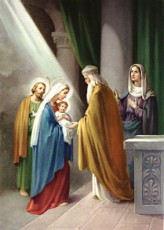
Presentation of Jesus in the Temple
Enlighten your inbox.
Subscribe to our email newsletter to get encouraging resources and updates from Newman Ministry.
902 W Main St Teutopolis, IL 62401 US
Newman Ministry is a 501(c)(3) national nonprofit organization. Your contribution is tax-deductible to the fullest extent permitted by law. No goods or services were received in exchange for your contribution. © Newman Ministry 2024. Newman Connection® is a registered trademark of Newman Connection. Privacy Policy | Terms of Use | Donation Policy | Site by Ink Blot Media Group
Grow Christians
A community of disciples fostering the faith of children in their care.
The Feast of the Presentation of Jesus in the Temple
February 2, 2020 By Carrie Willard 1 Comment
Today is the day that many Christians remember and honor the Presentation of Jesus in the Temple, or the event in scripture when Mary and Joseph brought the infant Jesus to the Temple. This event would have been to complete the purification of Mary and to offer the child to God in their obedience to the laws of Moses.
When I reflect on this event, I think about Mother Mary, scraping up enough money to buy two turtle doves, the sacrifice required to bring with them.
Was she still sore from childbirth? Did she feel like a mother yet? Was the baby sleeping at all? Did she have help?
When my husband and I traveled home for my father-in-law’s funeral when our firstborn was just six weeks old (about the same age as Jesus was during his presentation in the temple), I did not know how to fold up our stroller. I relied on TSA agents at the airport to help me figure everything out. And yet, everywhere we went, strangers complimented me on our baby. I didn’t know what to wear, but I knew I was completely in love with my baby. Time took on a warped quality, where I knew exactly how many weeks and days old my baby was, but I couldn’t have told you the day of the week or the season of the year. Friends and family fed us, but I was solely responsible for feeding this new life. How did Mary feel as she ascended the steps to the temple?
My friend Jenny Schroedel, an Orthodox Christian, wrote a beautiful reflection about her first six weeks with her baby as she followed the Orthodox tradition of “nesting in” with her baby. She describes the holiness of the 40-day-period following a baby’s birth. There are echoes of this in other aspects of Christian life: the 40 days of Lent and the 40 days and nights of rain of the Great Flood. Most pregnancies last about 40 weeks, and so 40 days does not seem like too long of a time to let a mother’s body recover. I wonder if Mary felt the same time-warped feeling that many of us do as she adjusted to life as a mother.
What makes the Presentation of Jesus in the Temple even more notable in Christian life, to me, is what the Holy Family found once they arrived. Simeon, a “righteous and devout” man, according to the Gospel of Luke, had been waiting for the salvation of Israel. Christians remember his words in the canticle “Nunc Dimittis,” which means “Now You Dismiss:”

Simeon knew, when he saw the infant Jesus, that what he had hoped for, prayed for, waited for, had come. Mother Mary may have been wondering if the shepherds and the wise men were all part of a postpartum haze, but here they were, re-entering public life as a family, and a prophet is waiting for them to affirm everything they had been told. I imagine Simeon, who waited for a sign from God, and found it in an infant.
In the Episcopal Church, we often repeat Simeon’s words during Evening Prayer and Compline, liturgies that can be said at the end of any day. It reminds us of the many who waited their entire lives for the good news of Jesus, a “light to enlighten the nations.” For those of us who are waiting, for those of us who feel like we are in a timeless haze, and for those of us who need to be reminded of the enormous good news of Jesus, this event helps us mark time in the life of Jesus and in the life of the Church for which we can be grateful.
[Image Credit: Public Domain via Wikimedia Commons ]
Share this:
Discover more from grow christians.
Subscribe to get the latest posts to your email.
Type your email…
February 2, 2020 at 4:26 pm
Lovely and thoughtful reflection. Thank you for blessing me with a new perspective on a familiar story!
Leave a Reply Cancel reply

IMAGES
VIDEO
COMMENTS
All of this helpsus to see that the Presentation in the Temple was about two important things: (1) the purification of Mary and (2) the redemption of baby Jesus. So far so good. But there are two other elements here which are worth paying attention to. For one thing, the Mosaic Law nowhere demanded that the purification or the redemption take ...
Introduction: This feast commemorates how Jesus, as a baby, was presented to God in the Temple in Jerusalem.This presentation finds its complete and perfect fulfillment in the mystery of the passion, death and Resurrection of the Lord. The Feast of the Presentation of the Lord is a combined feast, commemorating the Jewish practice of the purification of the mother after childbirth and the ...
The Presentation of Jesus is an early episode in the life of Jesus Christ, describing his presentation at the Temple in Jerusalem.It is celebrated by many churches 40 days after Christmas on Candlemas, or the "Feast of the Presentation of Jesus".The episode is described in chapter 2 of the Gospel of Luke in the New Testament. Within the account, "Luke's narration of the Presentation in the ...
The Catechism of the Catholic Church (paragraph 529) teaches, The presentation of Jesus in the temple shows him to be the firstborn Son who belongs to the Lord. With Simeon and Anna, all Israel awaits its encounter with the Savior-the name given to this event in the Byzantine tradition. Jesus is recognized as the long-expected Messiah, the ...
Jesus is a Jew from a faithful family. Luke's narration of the Presentation in the Temple (v 22 -23) explains the reason for the temple visit being to follow purification laws and redemption laws set out in the Books of the Old Testament. Jesus of Nazareth is not wealthy. This is shown in their offering of two turtle doves.
Jesus' Presentation at the Temple. 22 Now [] when the time came for their [] purification according to the law of Moses, Joseph and Mary [] brought Jesus [] up to Jerusalem to present him to the Lord 23 (just as it is written in the law of the Lord, "Every firstborn male [] will be set apart to the Lord" []), 24 and to offer a sacrifice according to what is specified in the law of the ...
The Story of the Presentation of the Lord. At the end of the fourth century, a woman named Etheria made a pilgrimage to Jerusalem. Her journal, discovered in 1887, gives an unprecedented glimpse of liturgical life there. Among the celebrations she describes is the Epiphany, the observance of Christ's birth, and the gala procession in honor of ...
The Presentation of Jesus in the Temple is an eloquent image of the total gift of one's life for all those, men and women, who are called to represent "the characteristic features of Jesus — the chaste, poor and obedient one" (Post-Synodal Apostolic Exhortation, Vita Consecrata, n. 1) in the Church and in the world, through the ...
Jesus Presented in the Temple - When the time came for the purification rites required by the Law of Moses, Joseph and Mary took him to Jerusalem to present him to the Lord (as it is written in the Law of the Lord, "Every firstborn male is to be consecrated to the Lord"), and to offer a sacrifice in keeping with what is said in the Law of the Lord: "a pair of doves or two young pigeons ...
On February 2, we observe the Feast of the Presentation of the Lord, honoring Jesus Christ's presentation in the Temple when he was a young child. The Fourth Joyful Mystery portrayed in the Presentation Chapel Fulfillment of the Old Covenant. Jesus' presentation in the Temple reflects how he fulfills the Old Covenant.
Jesus Is Presented in the Temple - Eight days later, when the baby was circumcised, he was named Jesus, the name given him by the angel even before he was conceived. Then it was time for their purification offering, as required by the law of Moses after the birth of a child; so his parents took him to Jerusalem to present him to the Lord. The law of the Lord says, "If a woman's first child ...
First, Jesus was already well aware of His identity and Mission. He was comfortable in His Father's House, the temple, and His teaching was already compelling. Even to the teachers in the temple at the mere age of twelve. Later, when he drove out the money changers, He was obliterating all obstacles to God.
It presents a beautiful meditation, allowing us time to think about every aspect of the biblical event and allow God's grace to invade our hearts. Let us enter the Temple of Jerusalem.The one ...
The temple in Jerusalem played a pivotal role in the life and ministry of Jesus Christ. As the center of Jewish worship and tradition, Jesus's interactions with the temple shaped his mission and message in profound ways. This article will explore the deep meaning behind Jesus's experiences at the temple, from his presentation there as an ...
Luke may also have seen Anna as the second witness in or around the Temple needed to validate Jesus' significance. Deuteronomy 19:15 stresses the importance of having two witnesses to validate an event. ... Twelve years after the presentation of Jesus in the Temple, the Holy Family returns to Jerusalem and Jesus returns to the Temple, this ...
Here is what Luke (2:22-24) actually says about the event: And when the time came for their purification according to the law of Moses, they brought him up to Jerusalem to present him to the Lord ...
From the very first moments of his earthly life, Jesus united Mary to the redeeming sacrifice that he had come to fulfill. The Presentation of Jesus in the Temple can be linked with the Offering of the Sacrifice of Calvary that the Mass makes present in all times and places. This sharing in the mystery of the Redemption was revealed little by ...
The Presentation of the Lord reminds us of the importance of community. Today we celebrate Jesus' presentation at the temple. This event is recorded only in the Gospel of Luke and is rooted in ...
Candlemas, also known as the Feast of the Presentation of Jesus Christ, the Feast of the Purification of the Blessed Virgin Mary, or the Feast of the Holy Encounter, is a Christian feast day commemorating the presentation of Jesus at the Temple by Joseph and Mary.It is based upon the account of the presentation of Jesus in Luke 2:22-40.According to the Old Testament rules in Leviticus 12, a ...
The Presentation of Jesus in the Temple celebrates an early episode in the life of Jesus. It falls between the Feast of the Conversion of St. Paul on January 25 th, and the Feast of the Chair of St. Peter on February 22 nd . In the Roman Catholic Church, the Presentation of Jesus in the Temple is the fourth Joyful Mystery of the Rosary.
In the episode of the Presentation of Jesus in the Temple (cf. Lk. 2:22-35), the Church, guided by the Spirit, has detected, over and above the fulfillment of the laws regarding the offering of the firstborn (cf. Ex. 13:11-16) and the purification of the mother (cf. Lv. 12:6-8), a mystery of salvation related to the history of salvation. ...
The Feast of the Presentation of Jesus in the Temple. Today is the day that many Christians remember and honor the Presentation of Jesus in the Temple, or the event in scripture when Mary and Joseph brought the infant Jesus to the Temple. This event would have been to complete the purification of Mary and to offer the child to God in their ...
The annual commemoration of the Presentation of the Lord in the Temple is also a Marian celebration and therefore at certain times in the past it was also known as the feast of the Purification of Mary. Even though Mary was preserved by God from original sin, as a Hebrew mother she chose to submit to the Law of the Lord, and therefore offered a ...